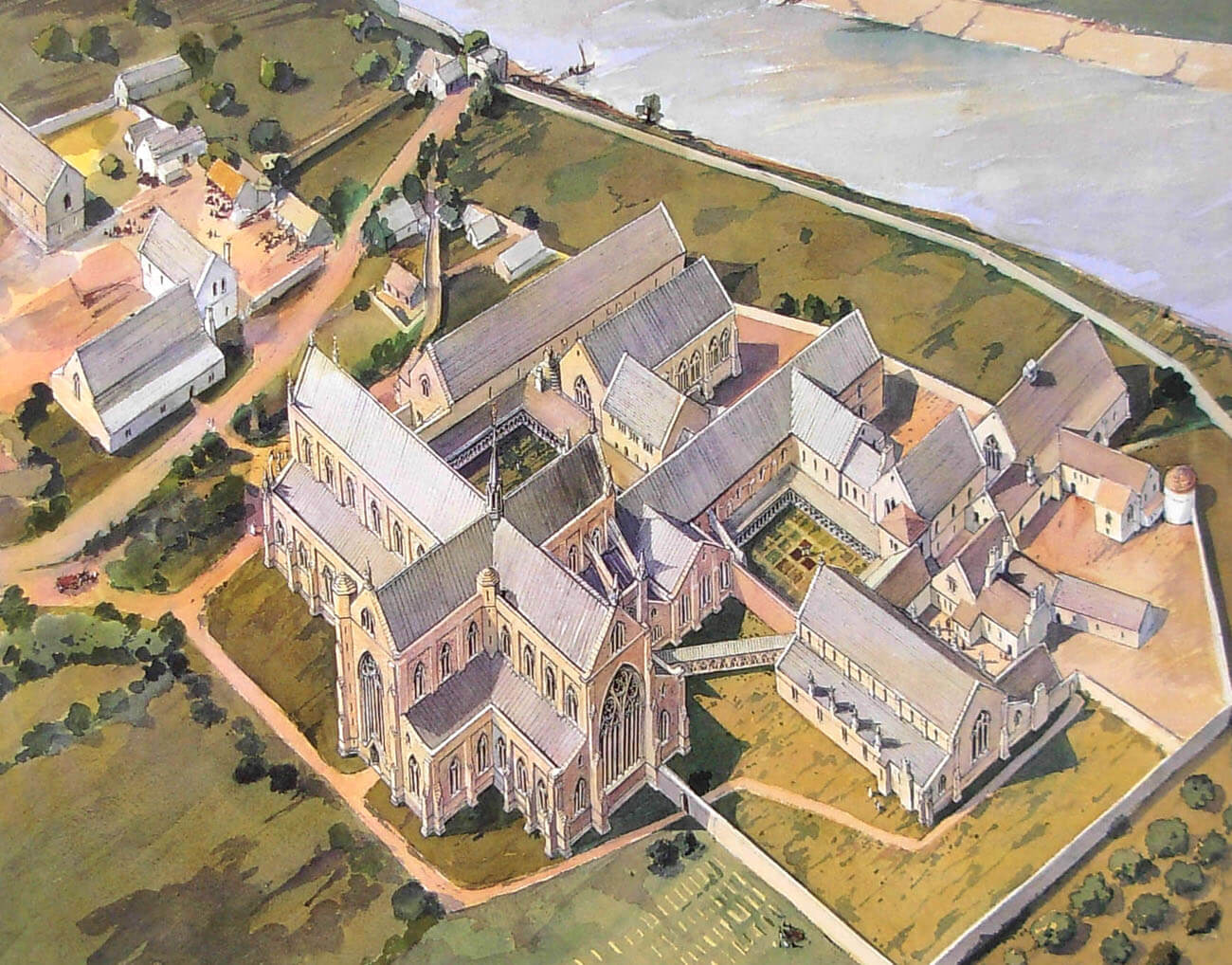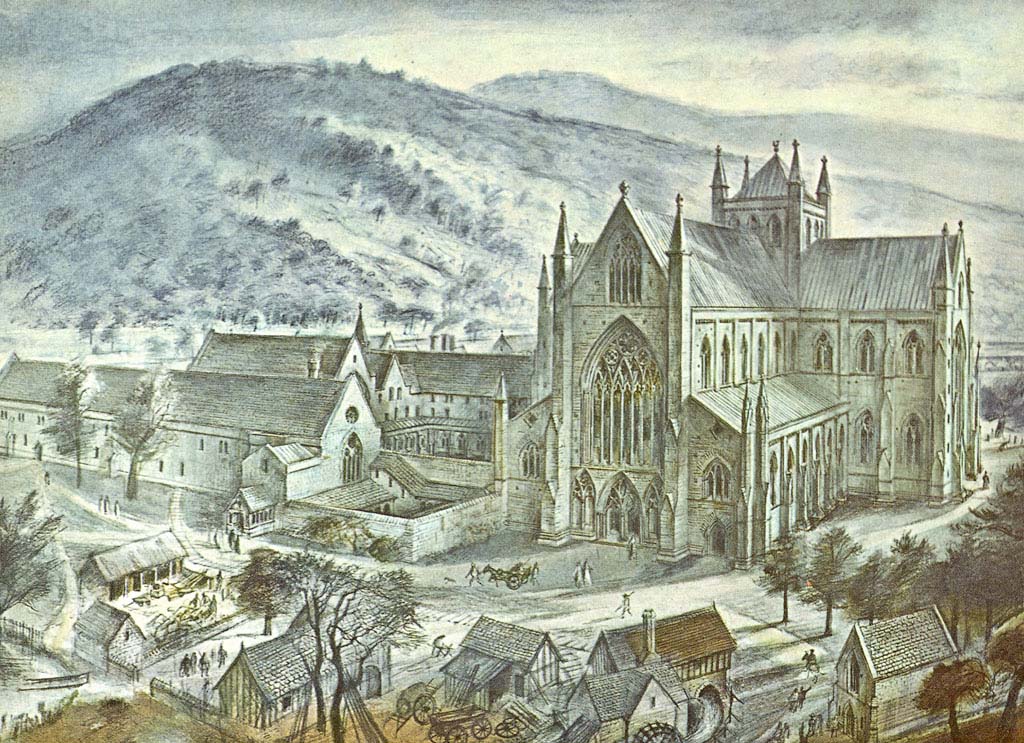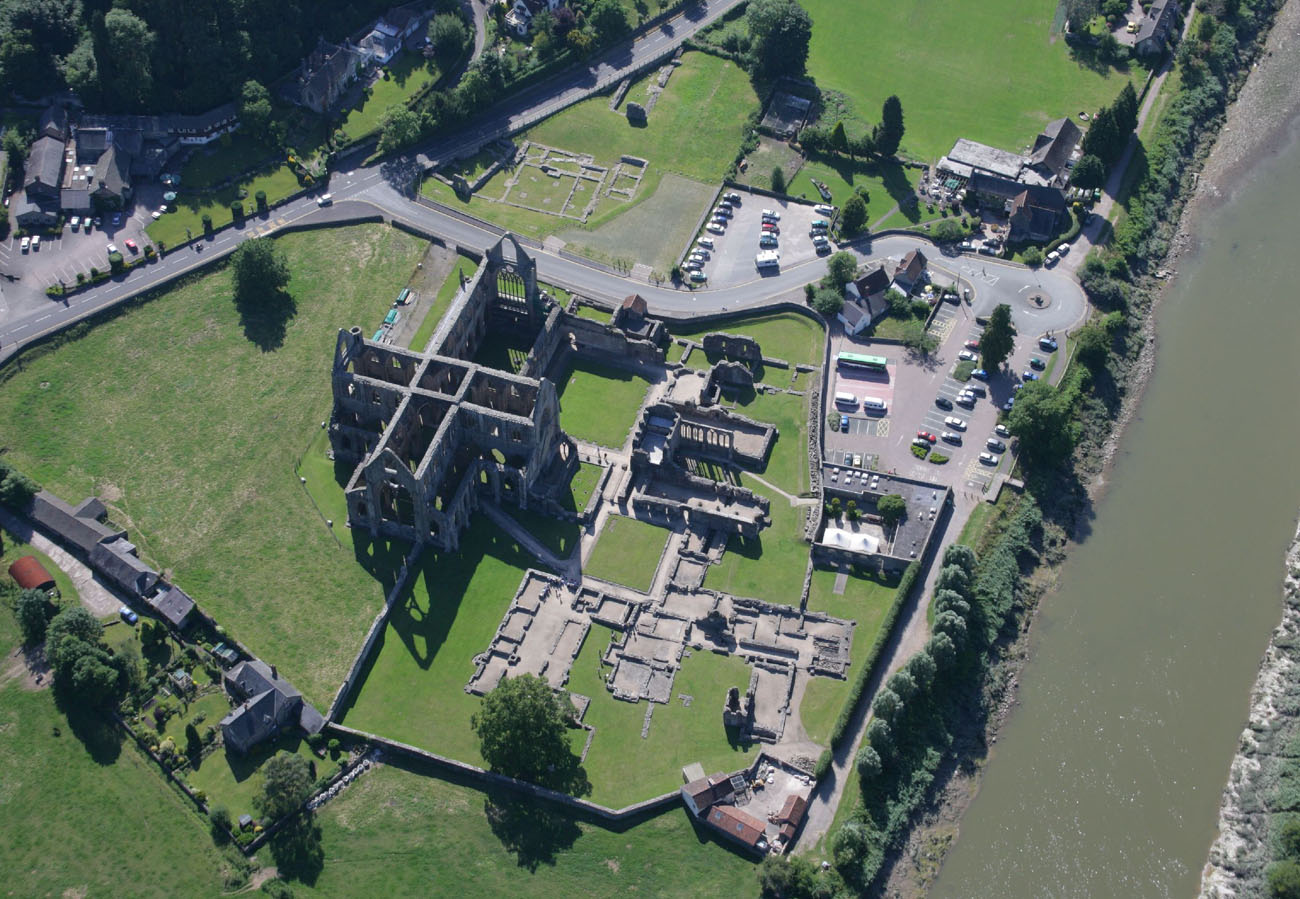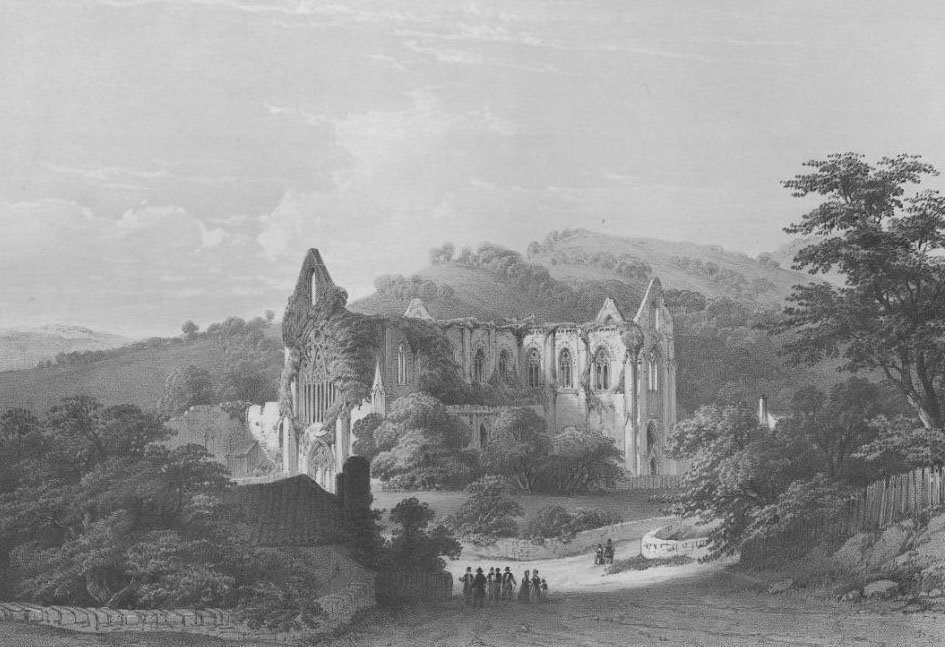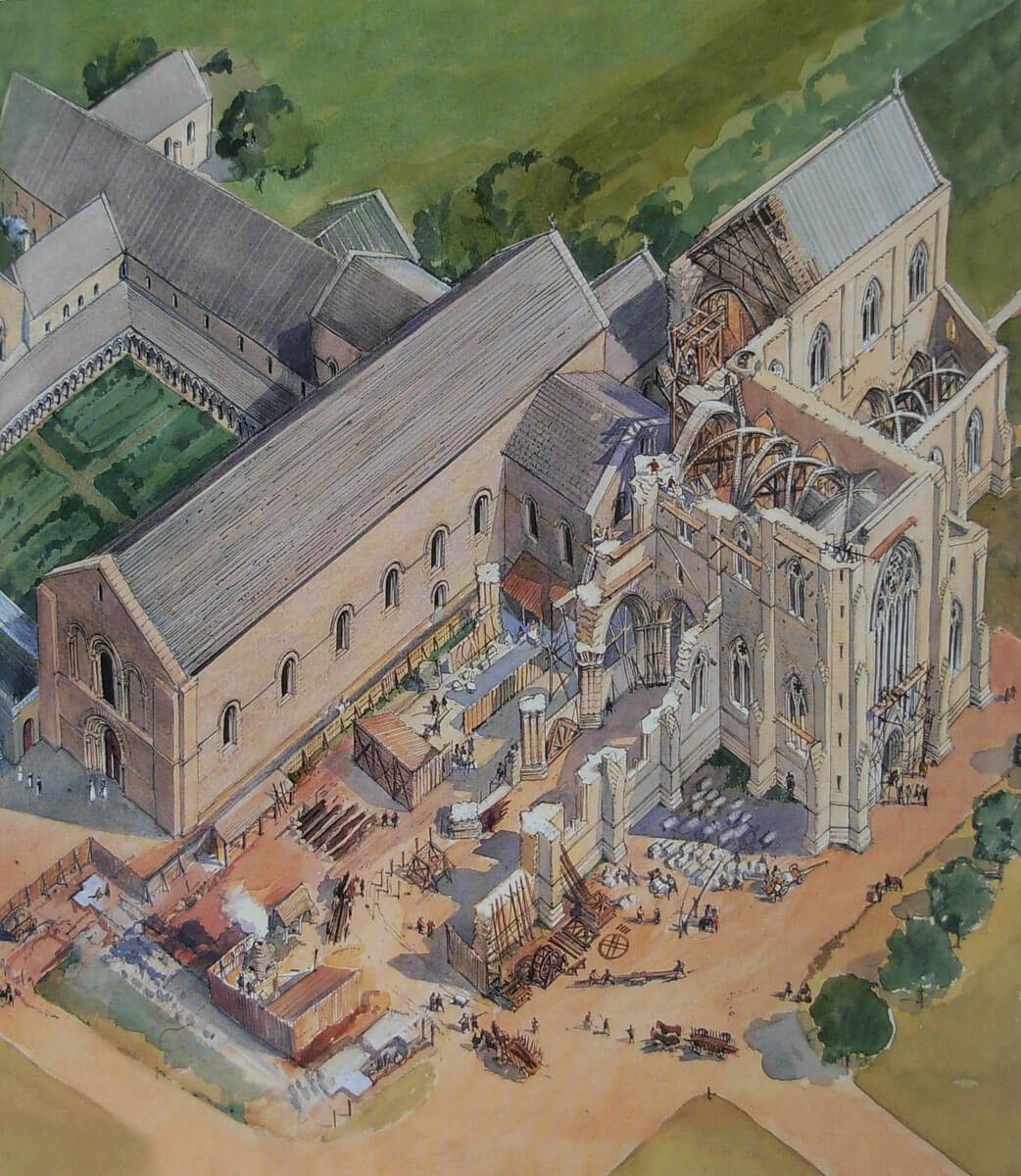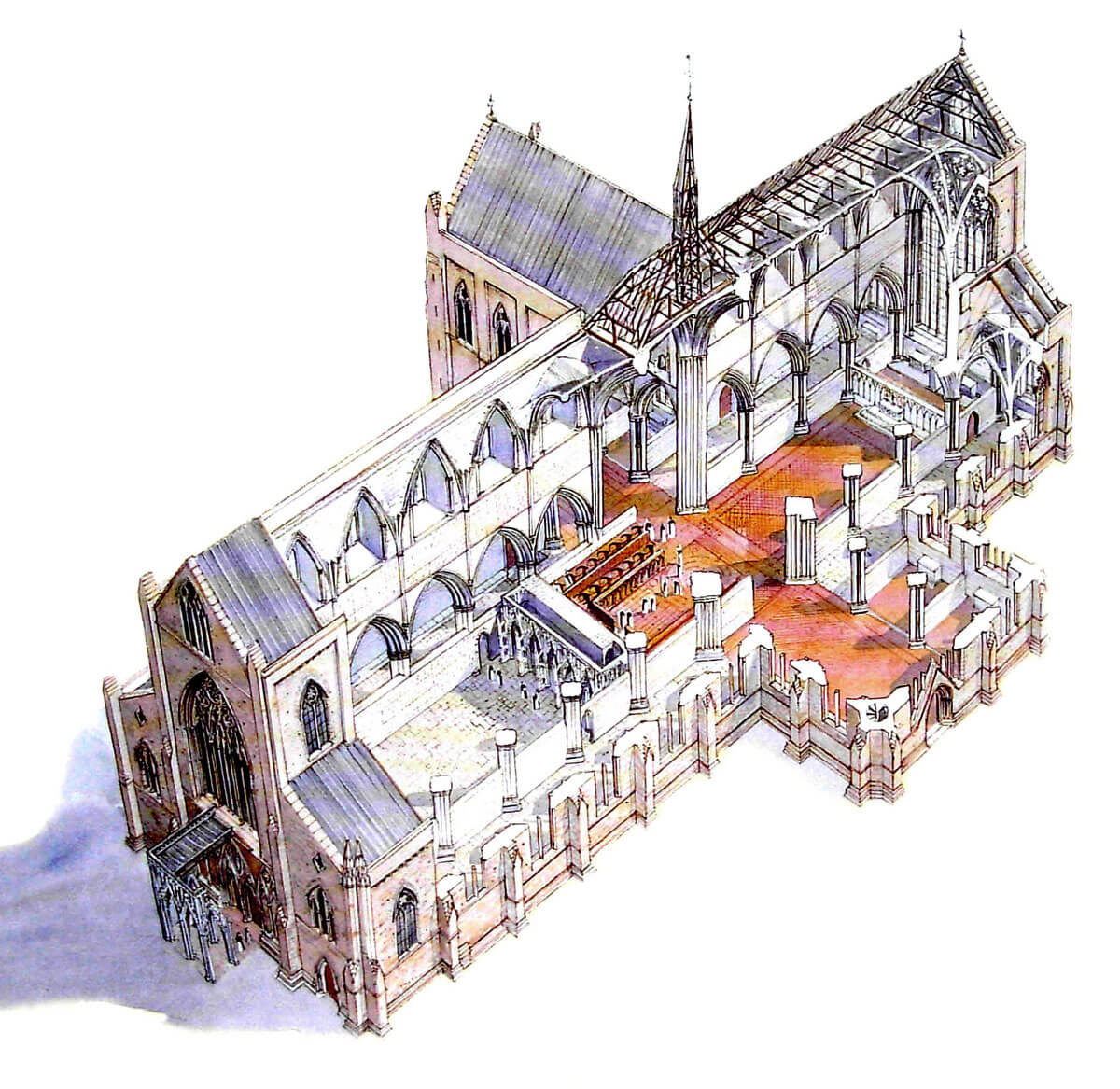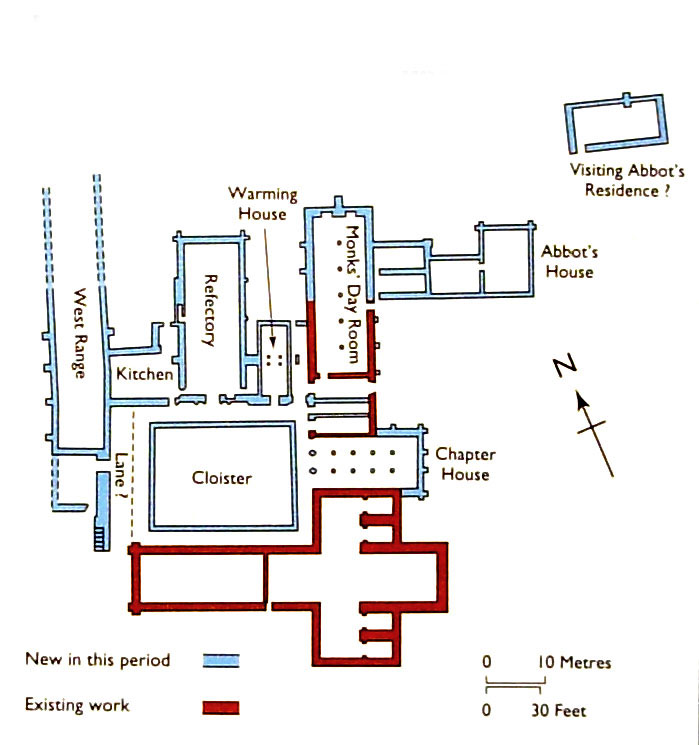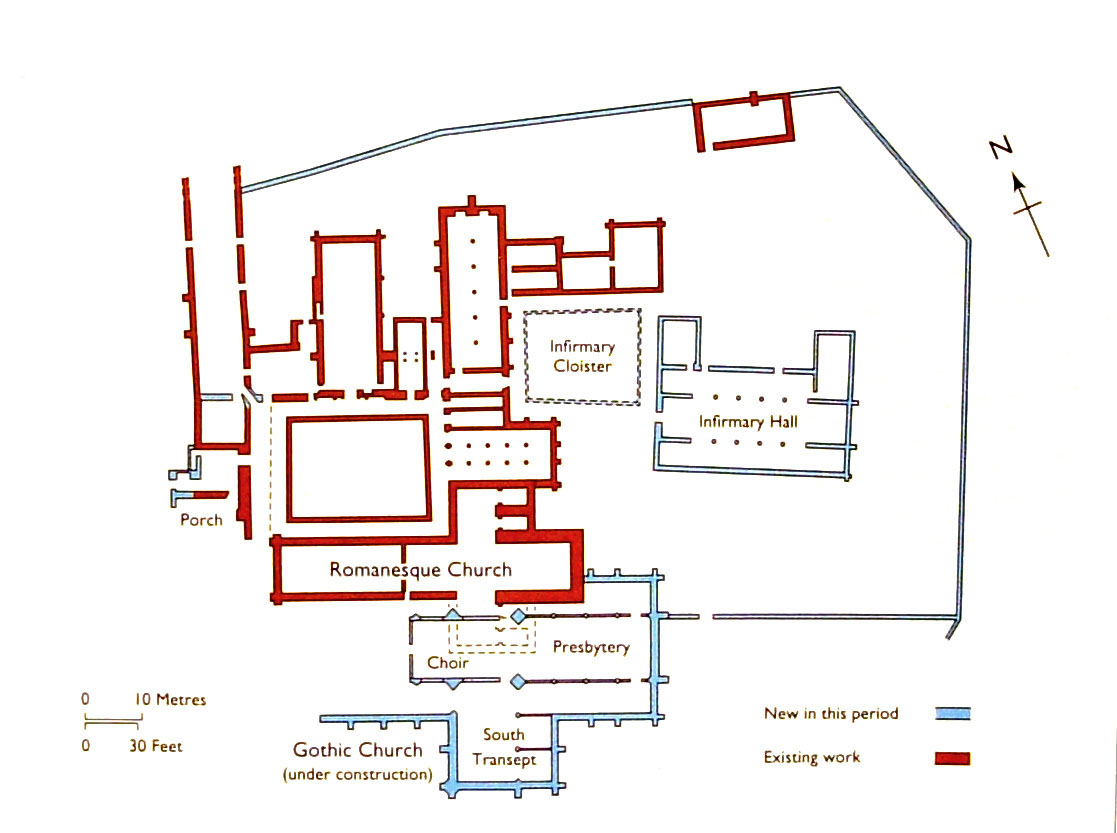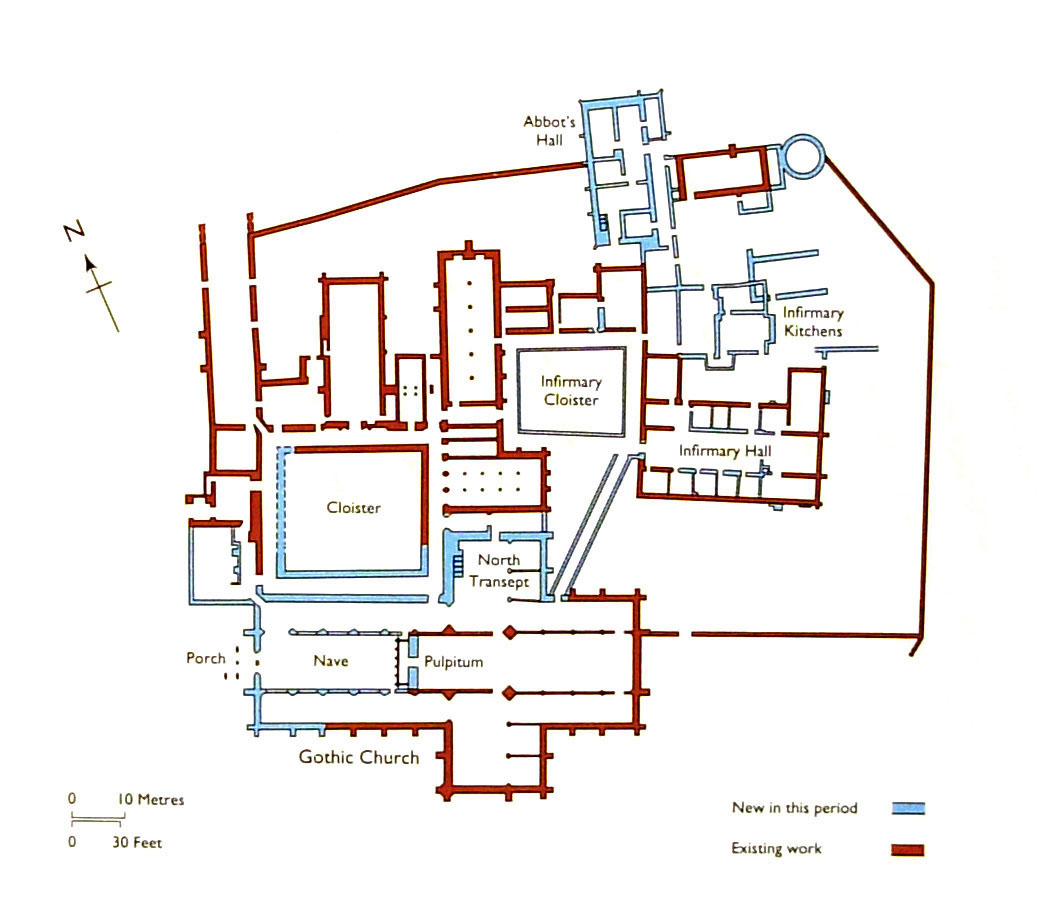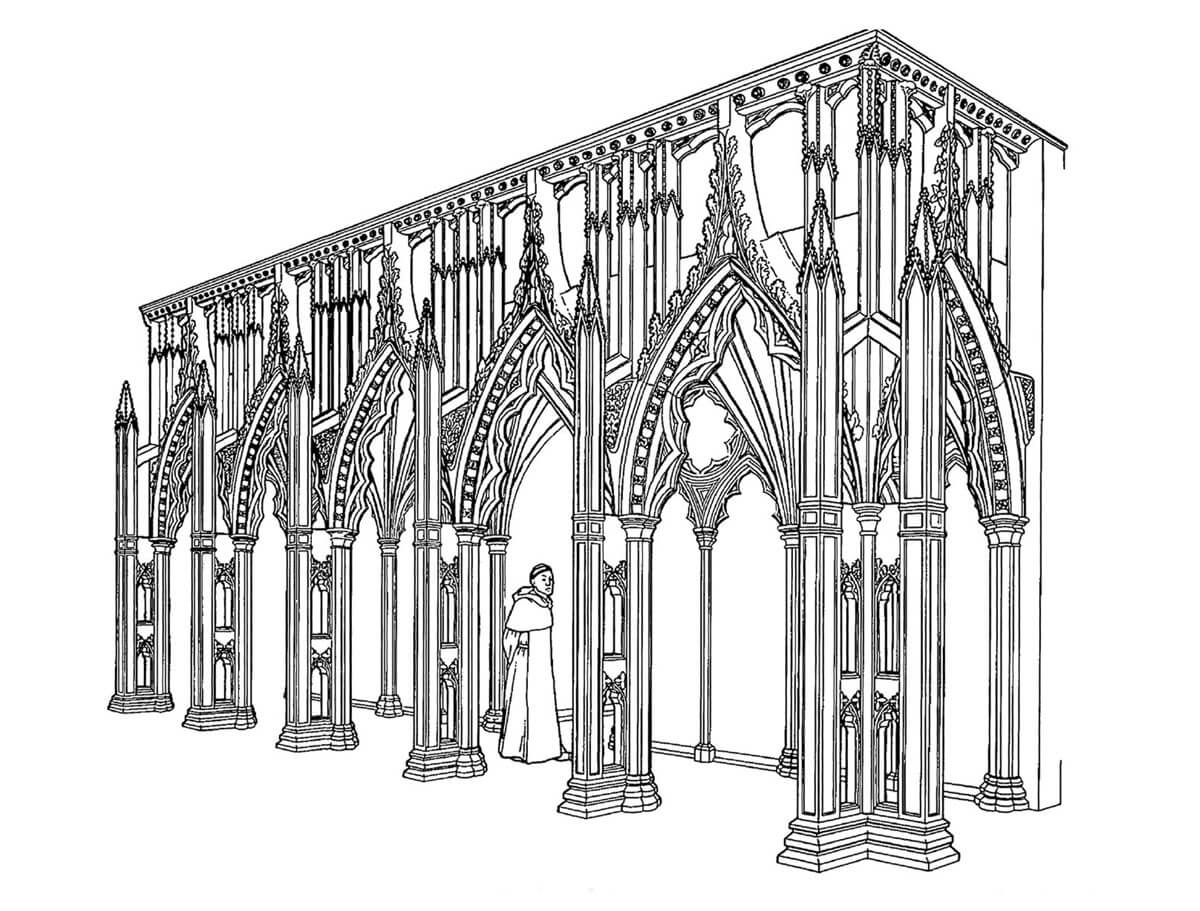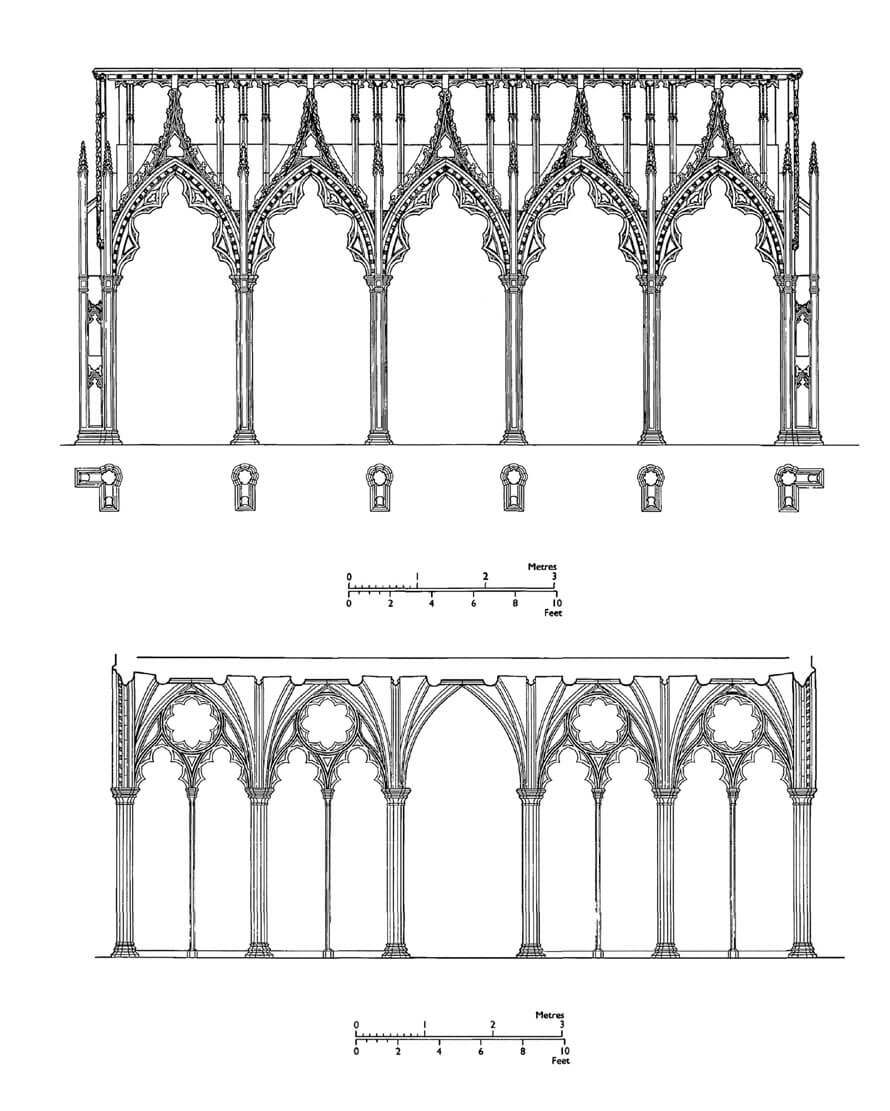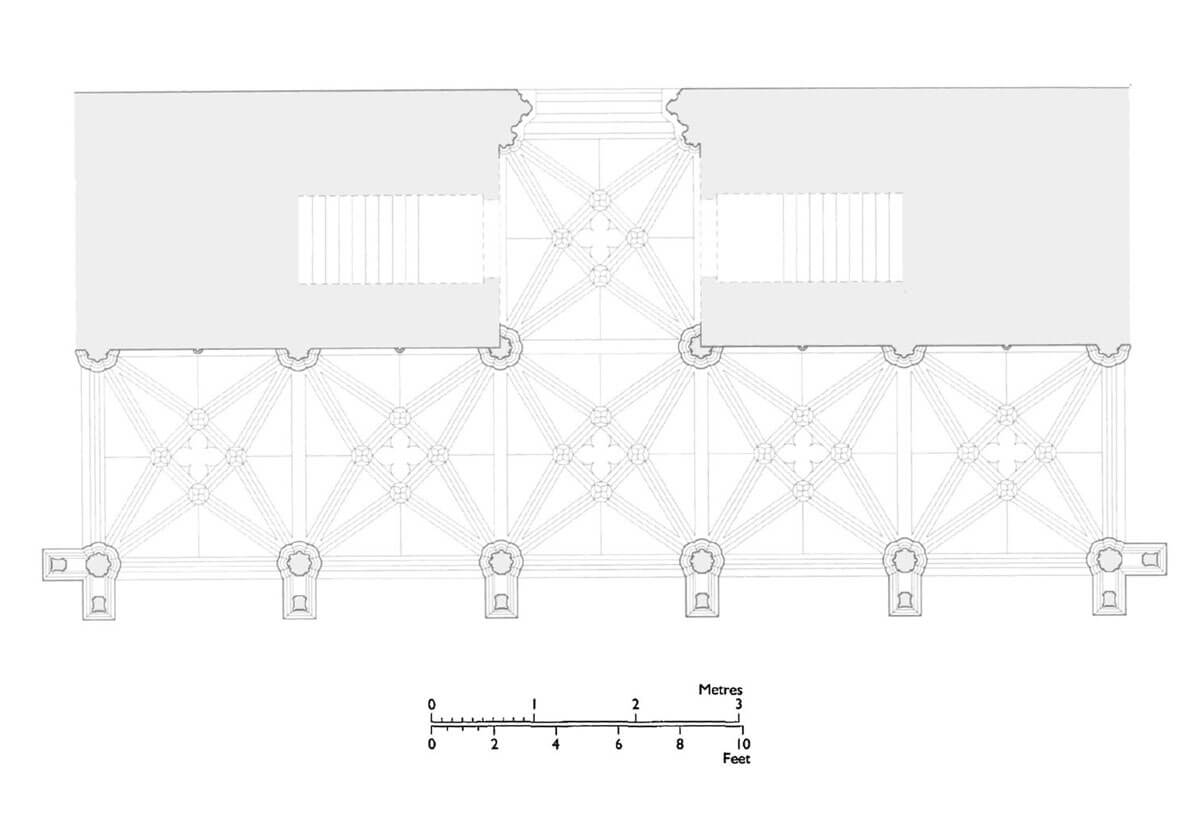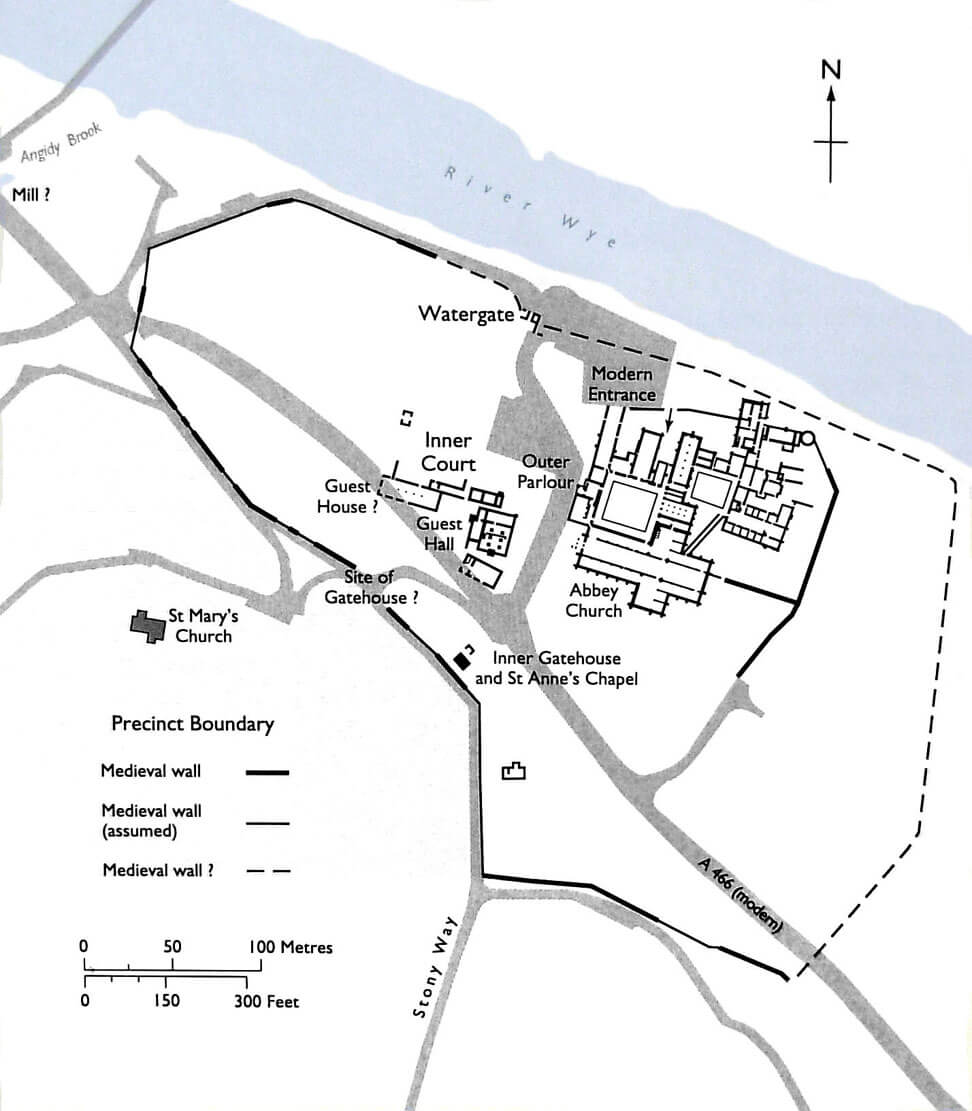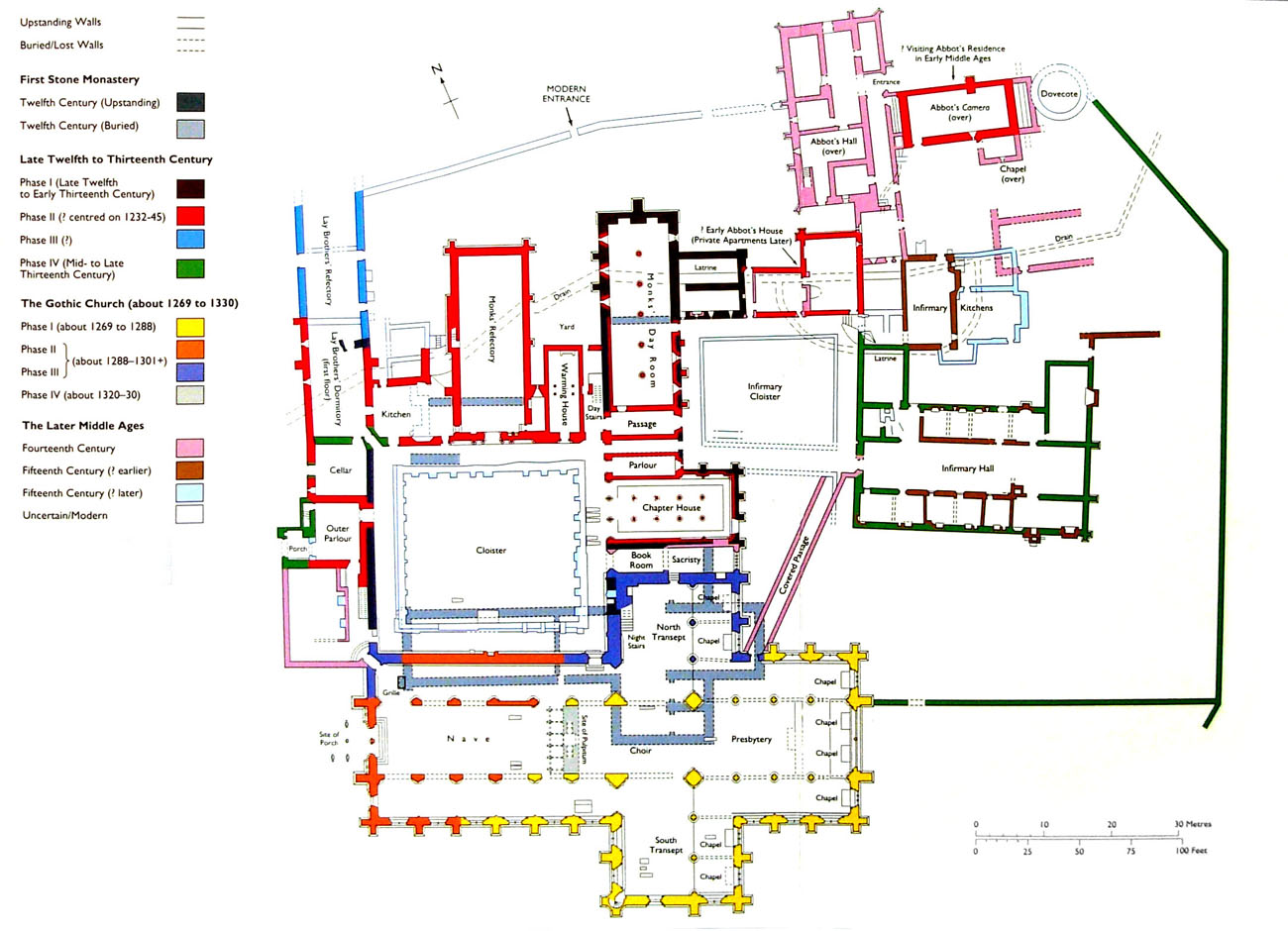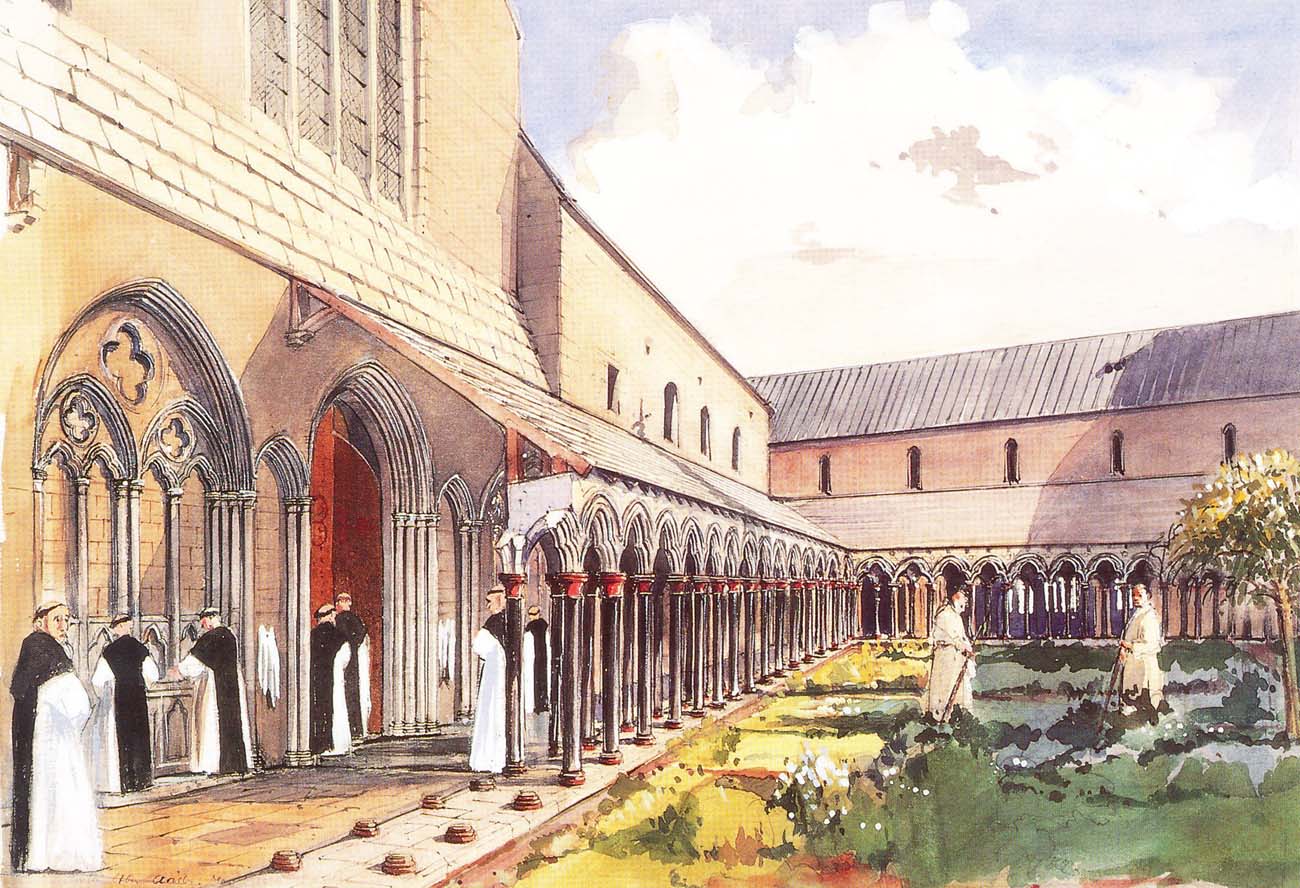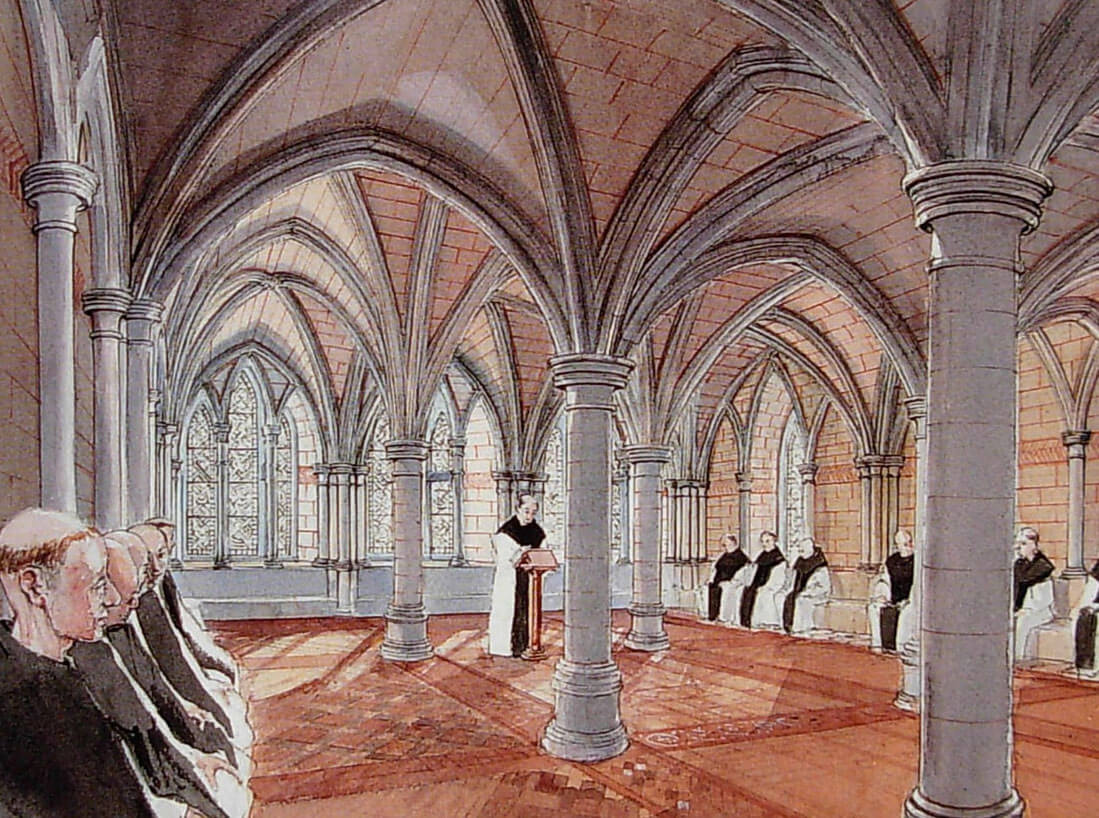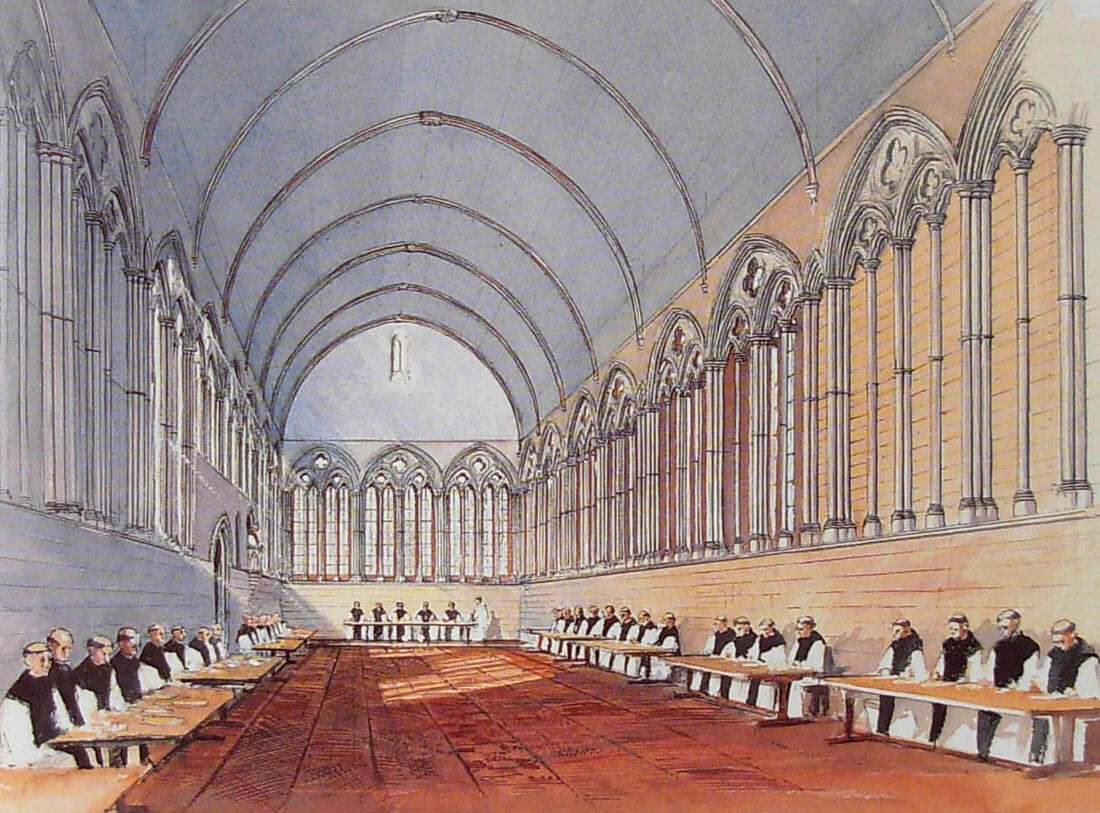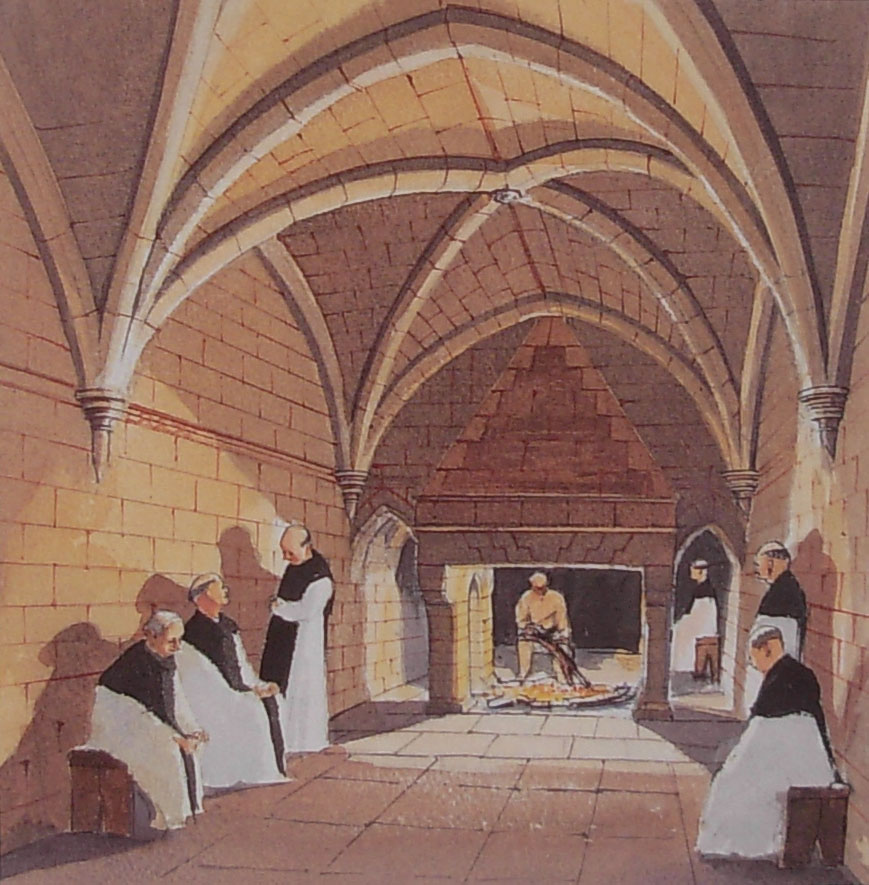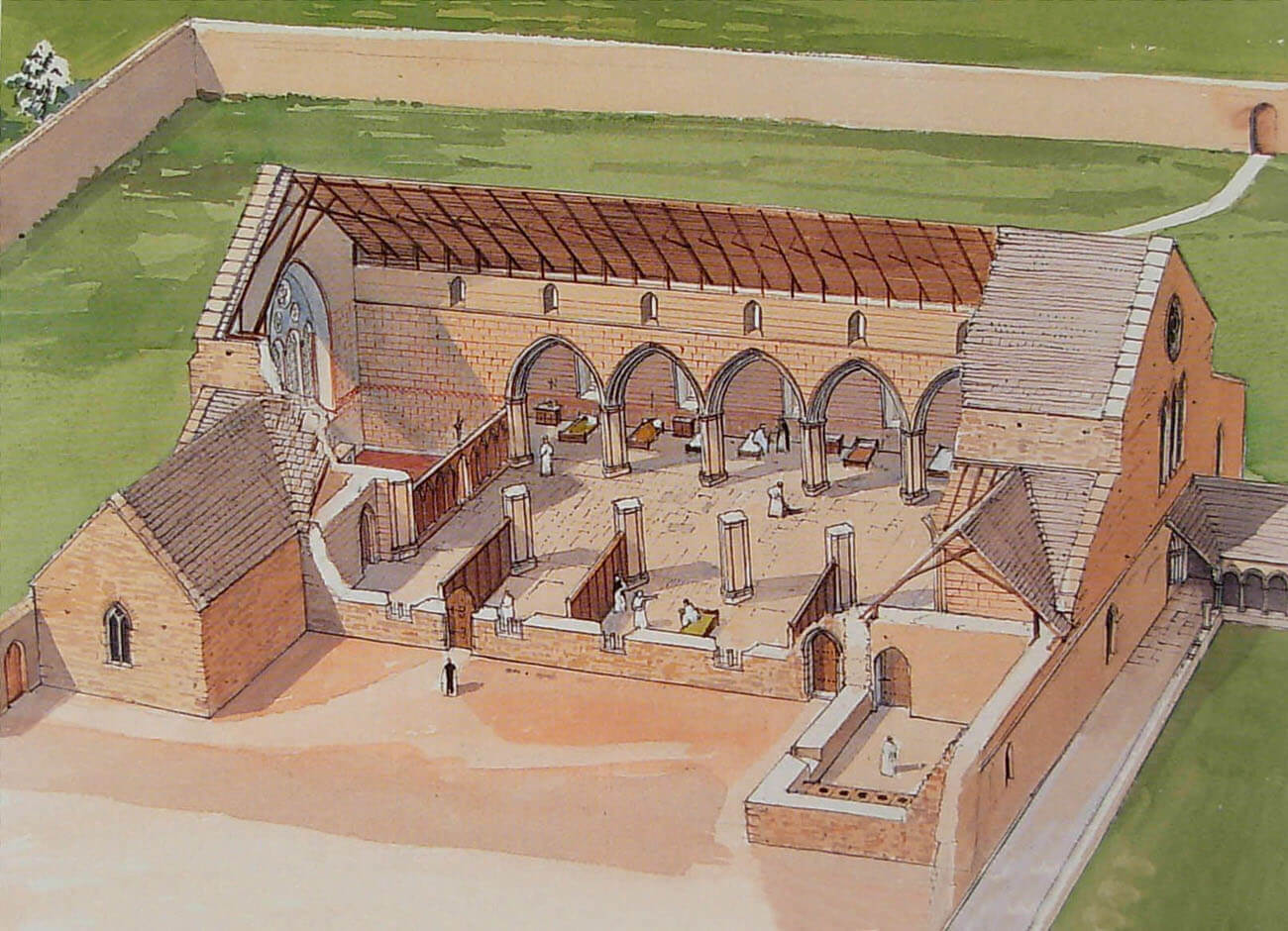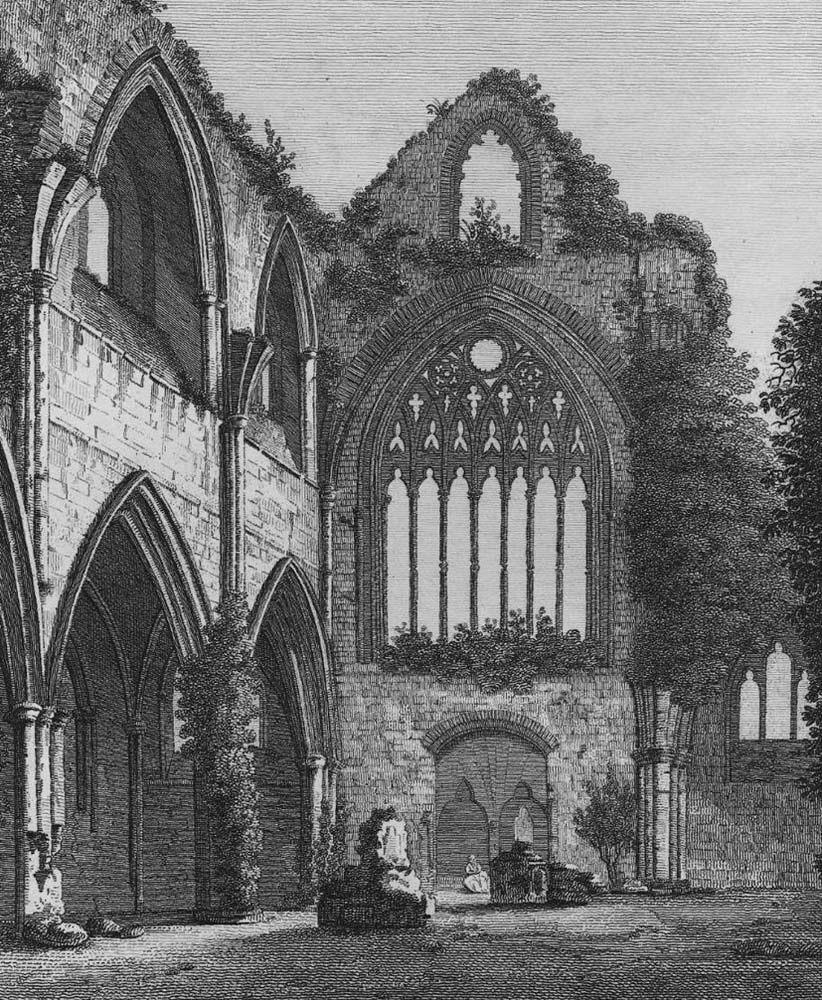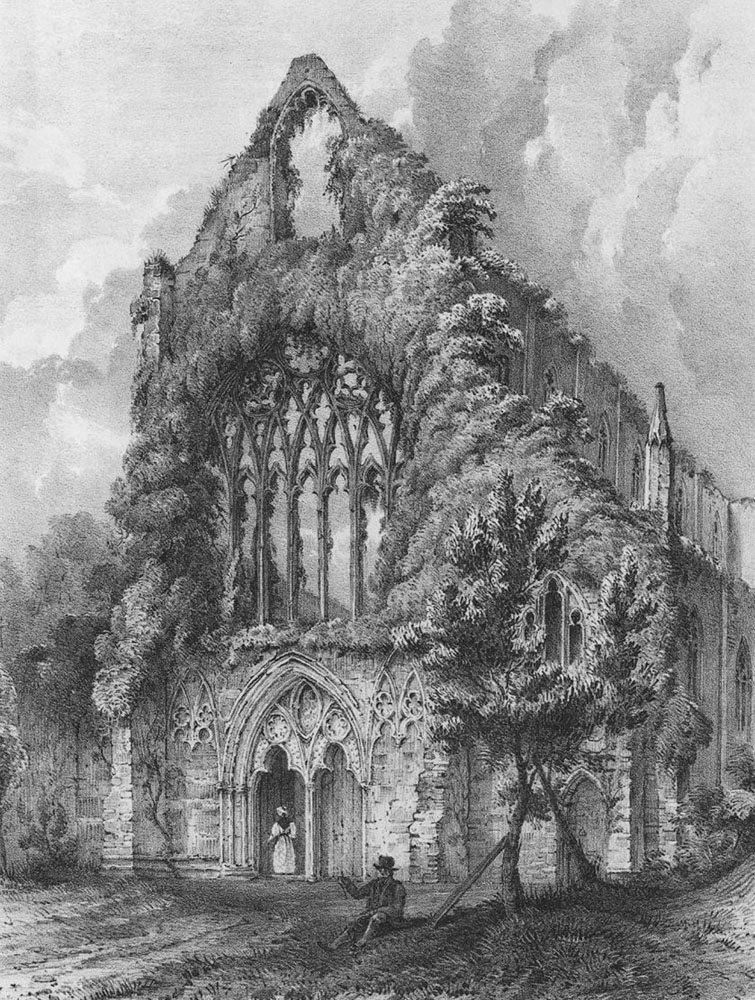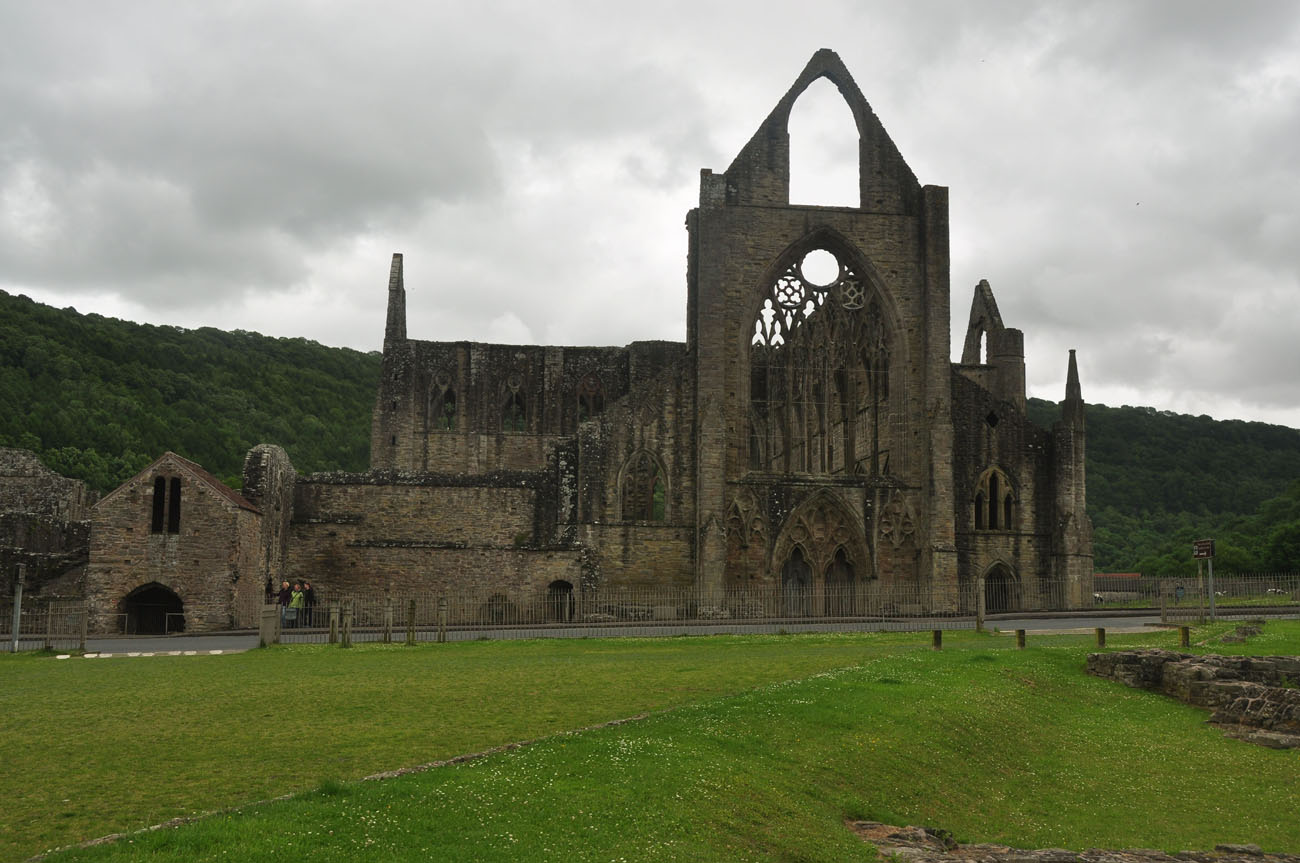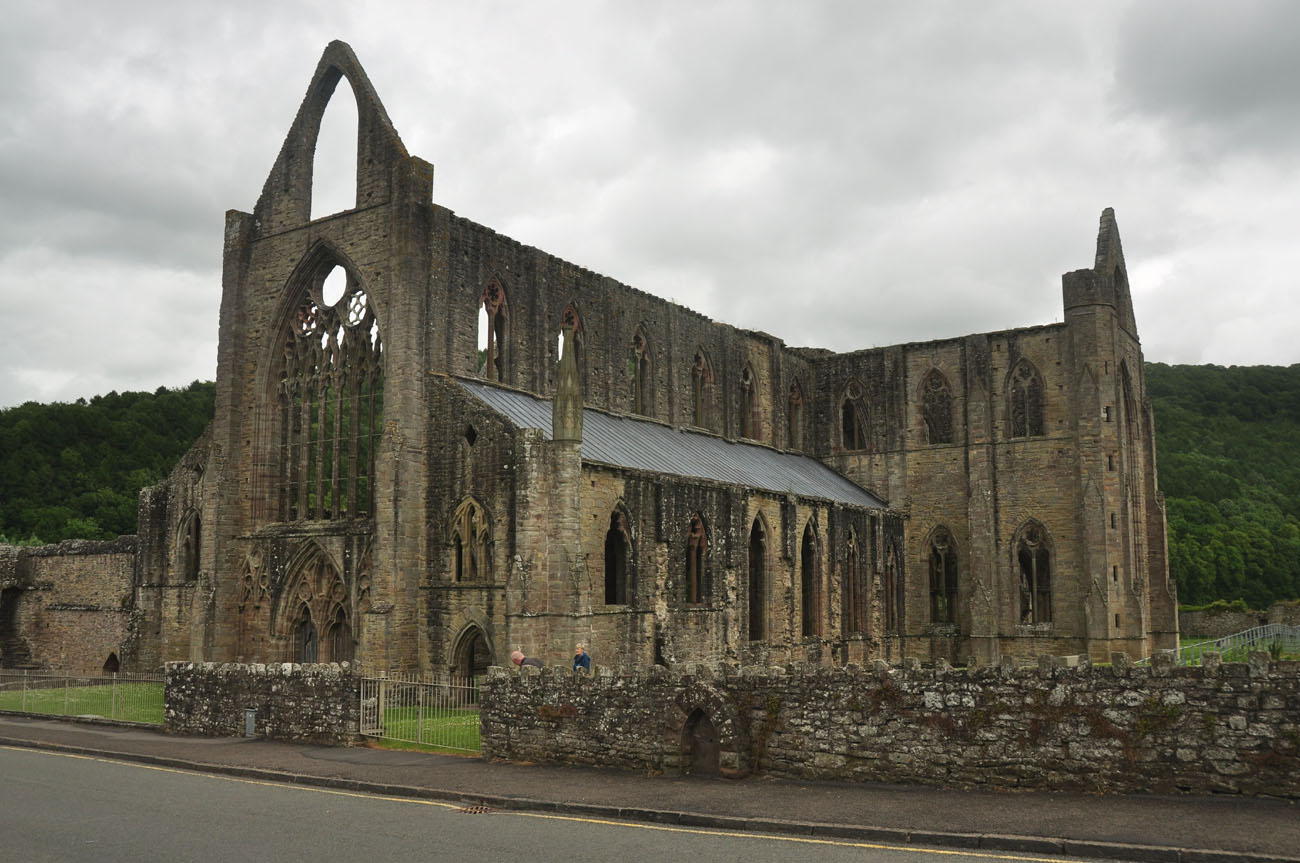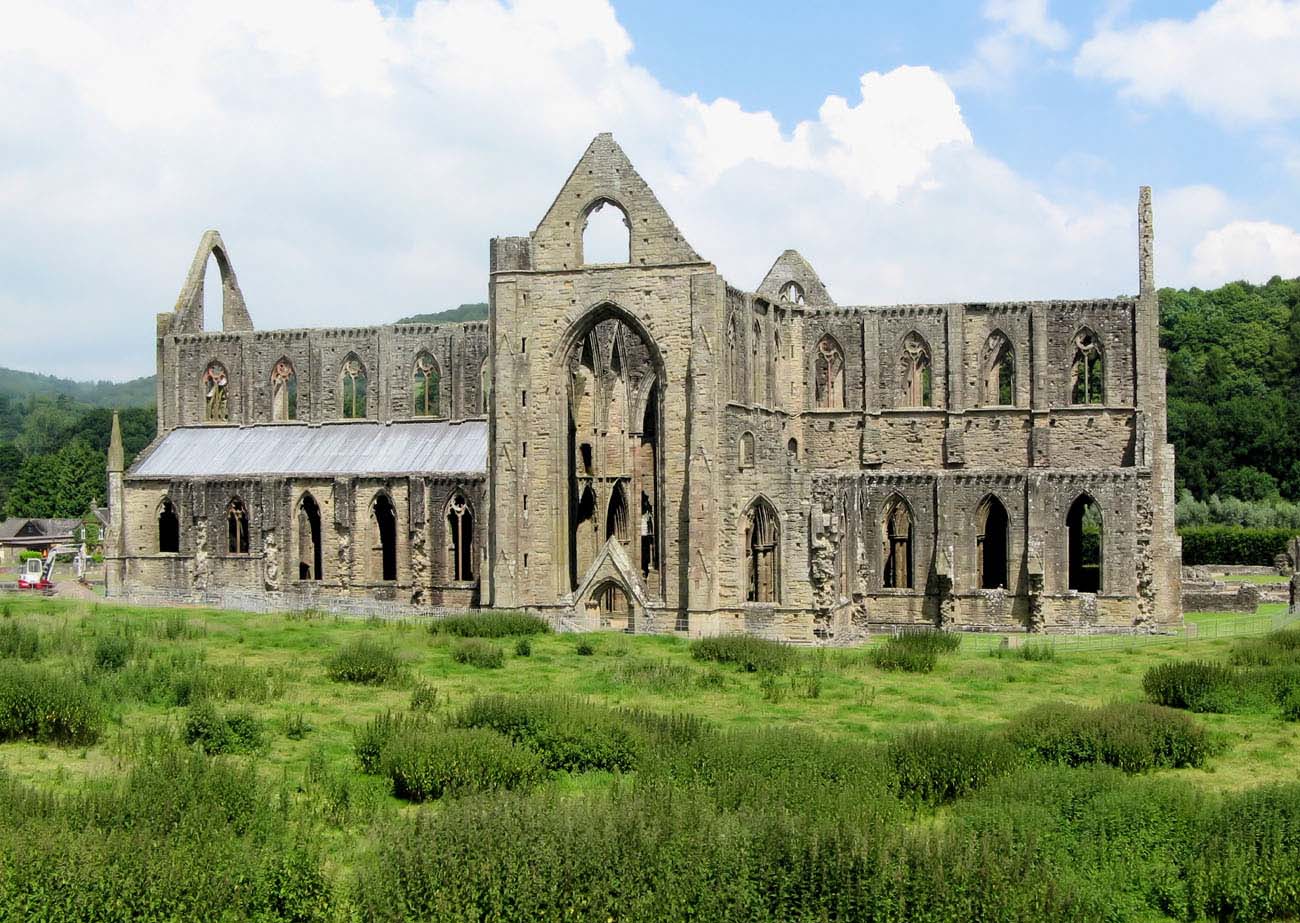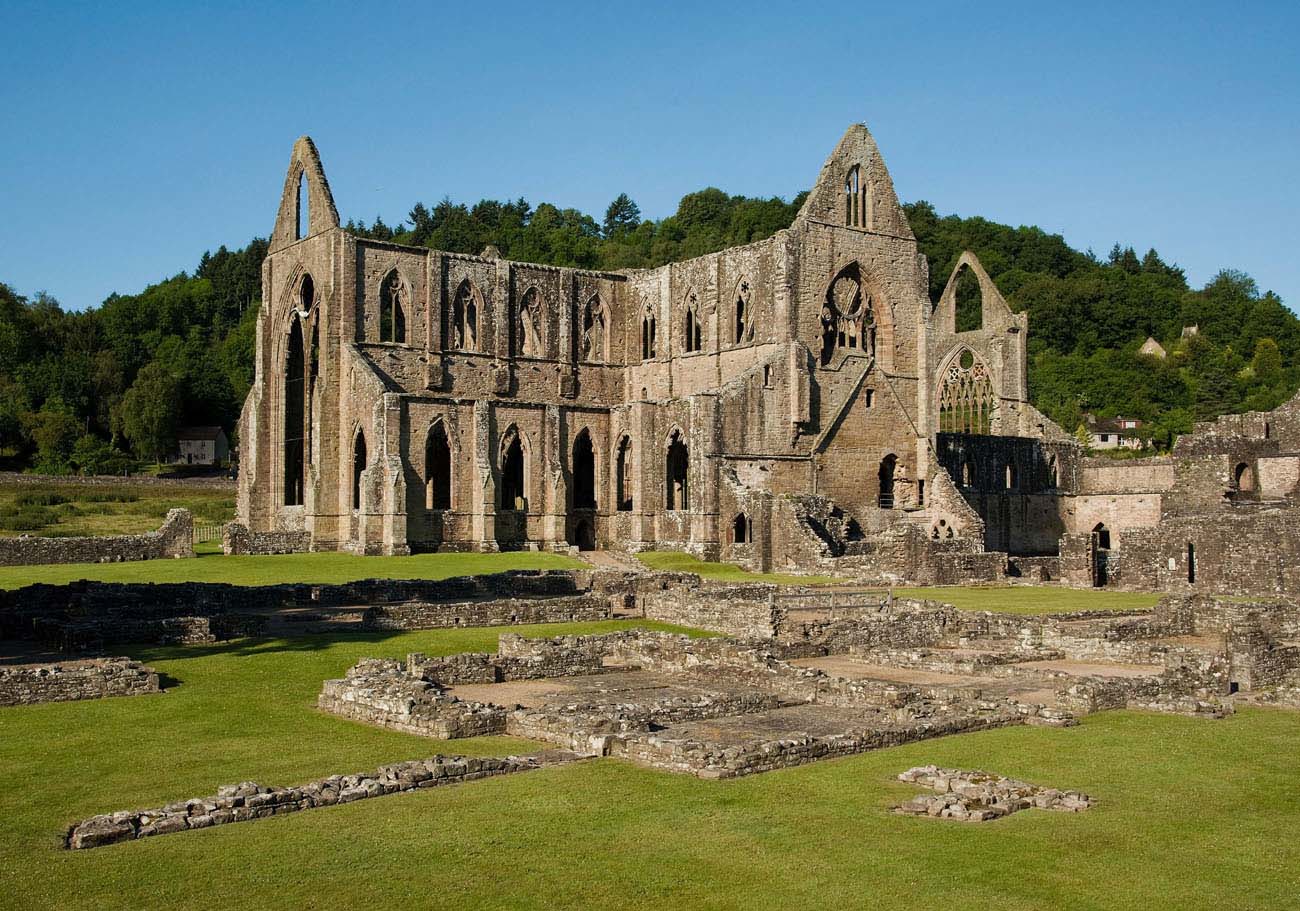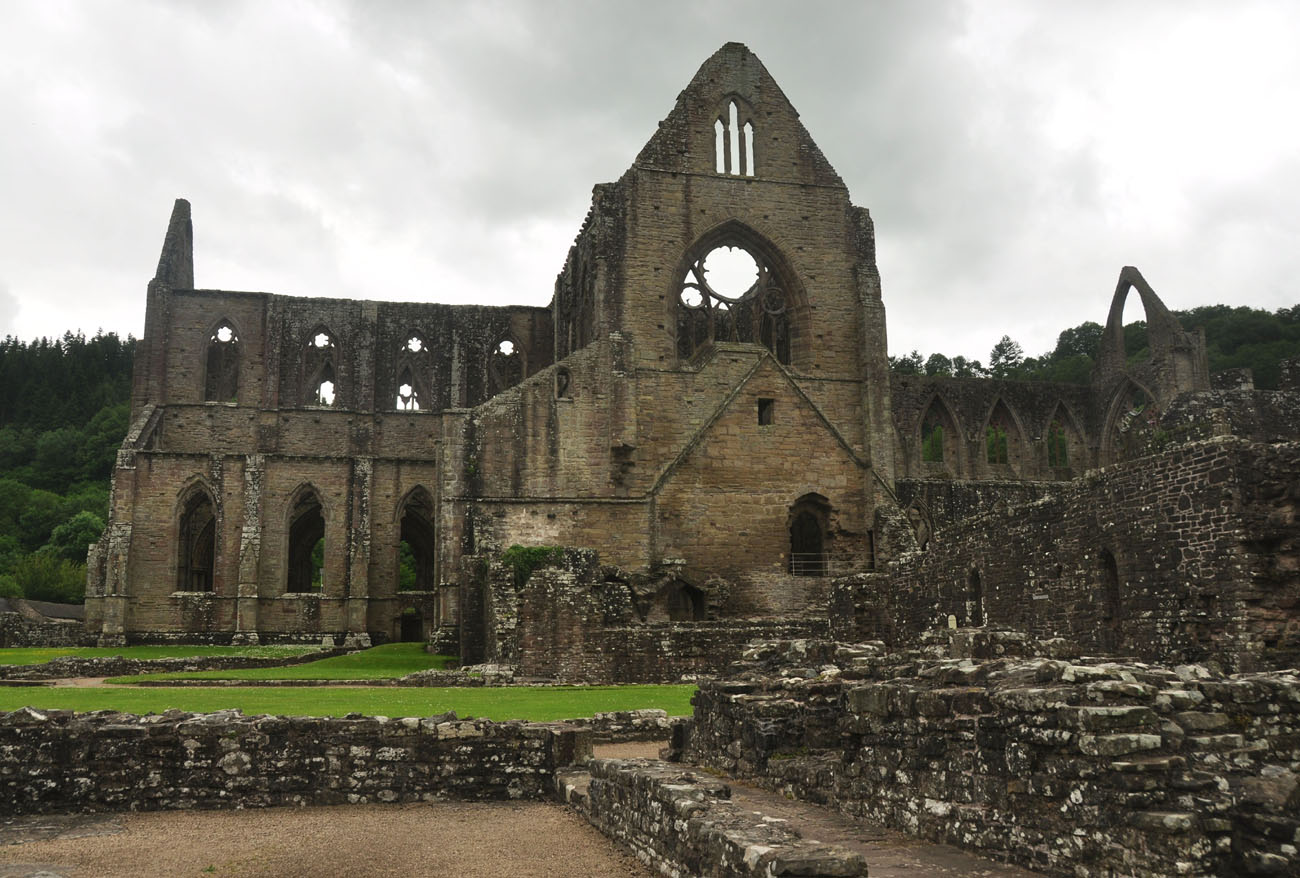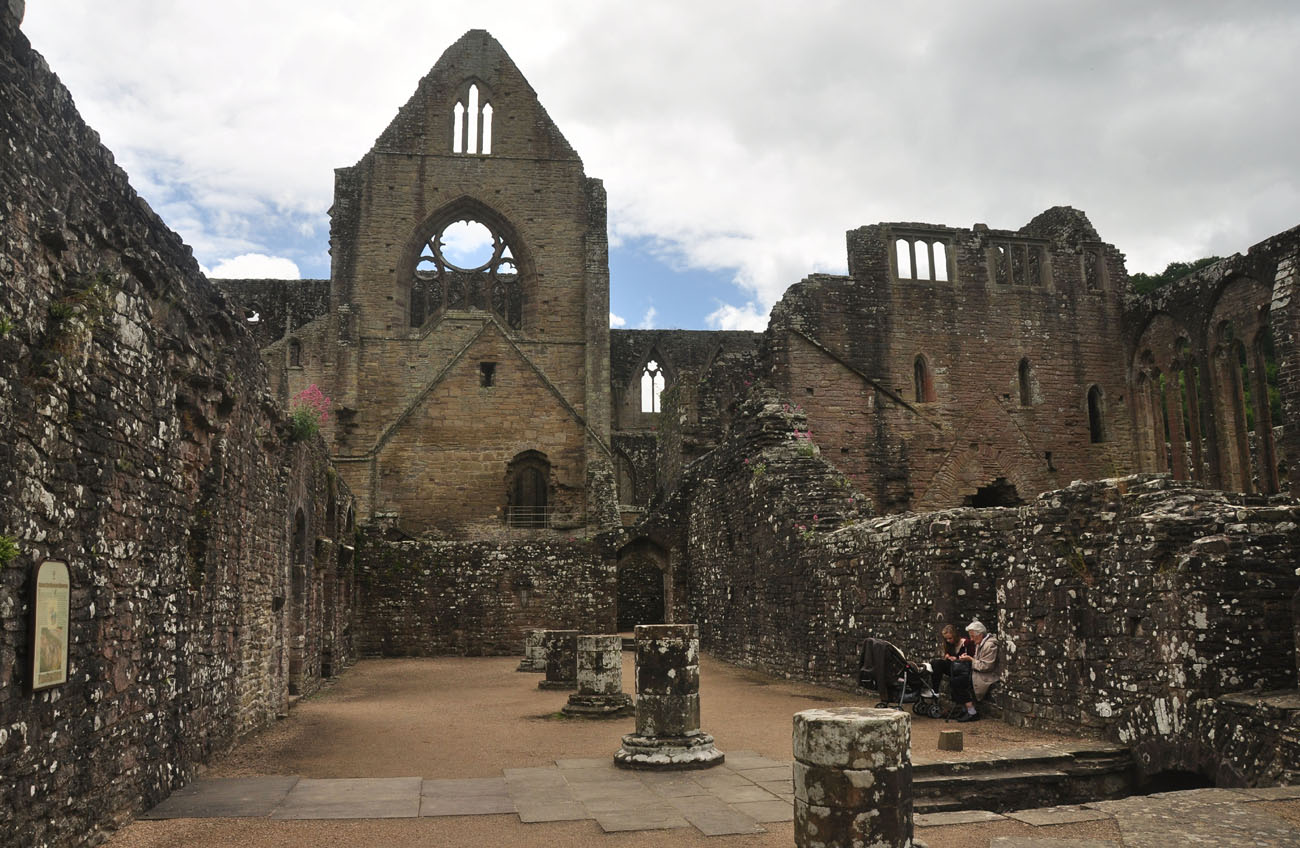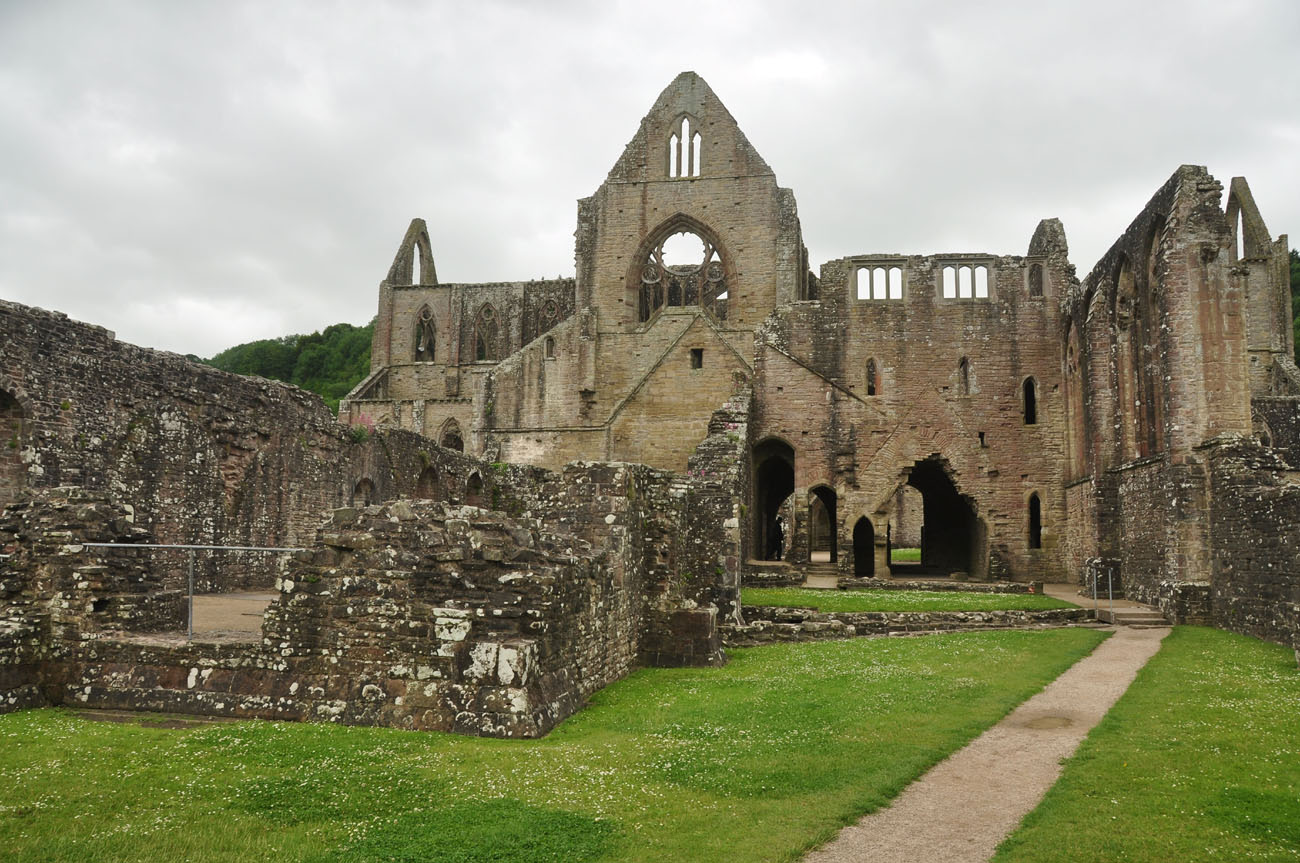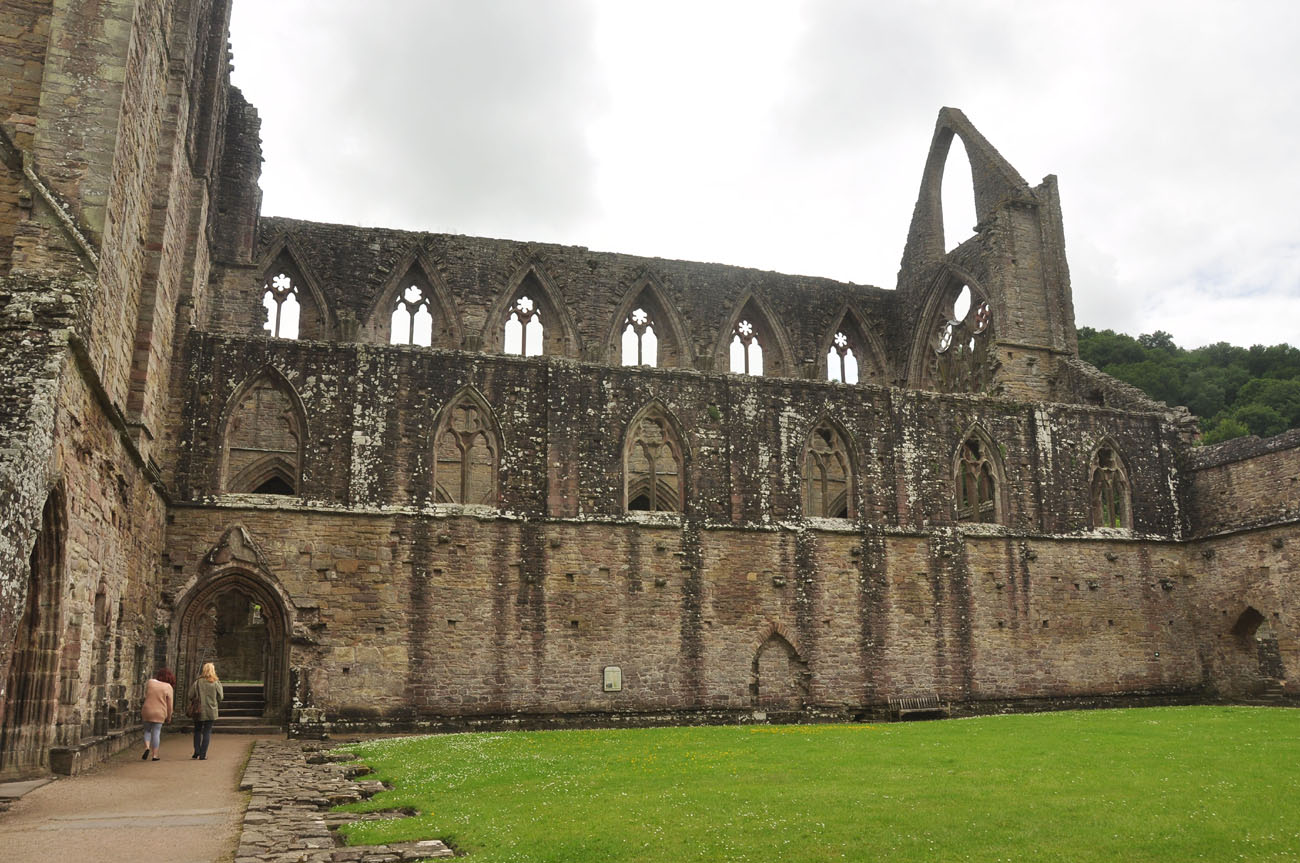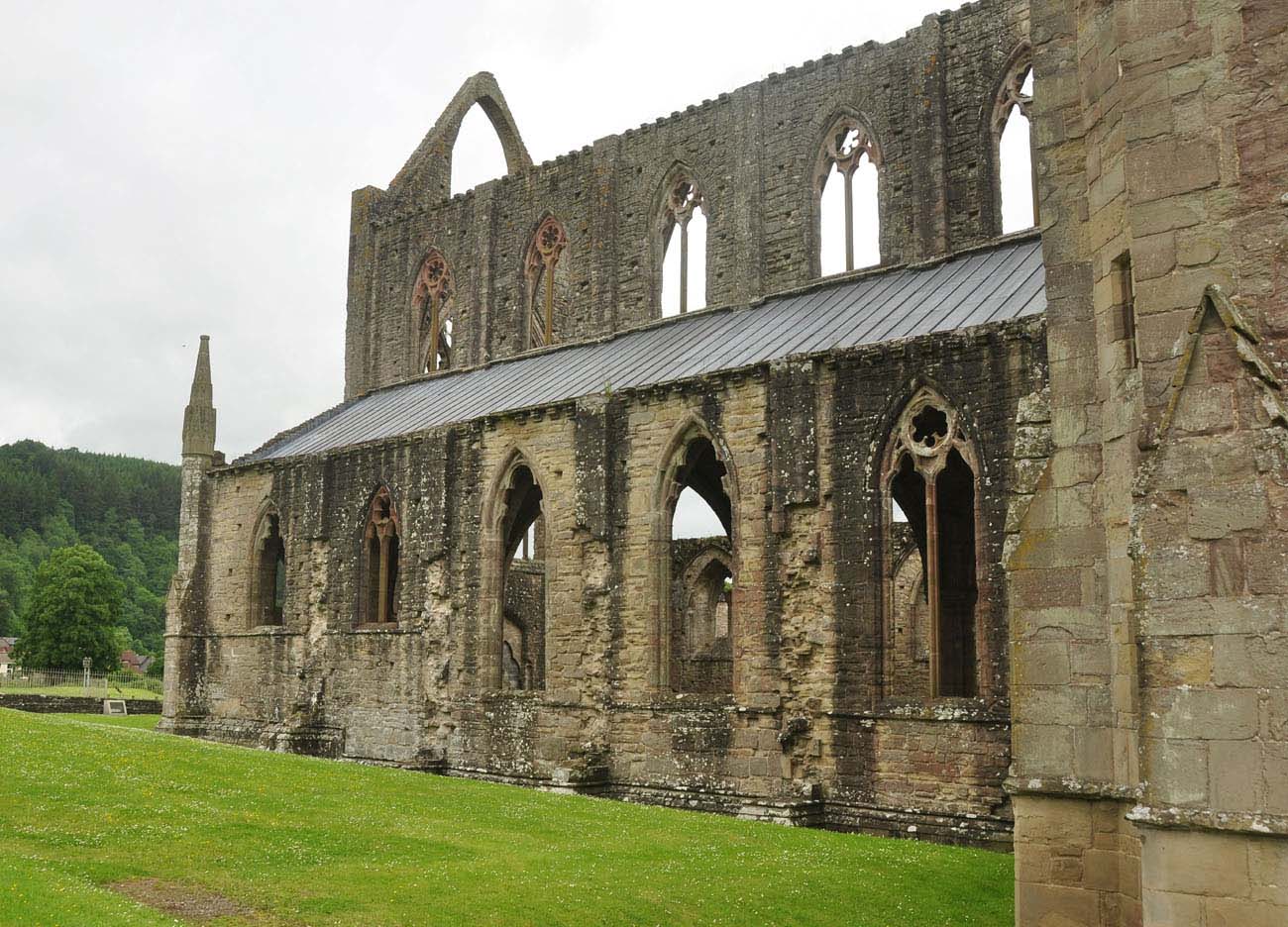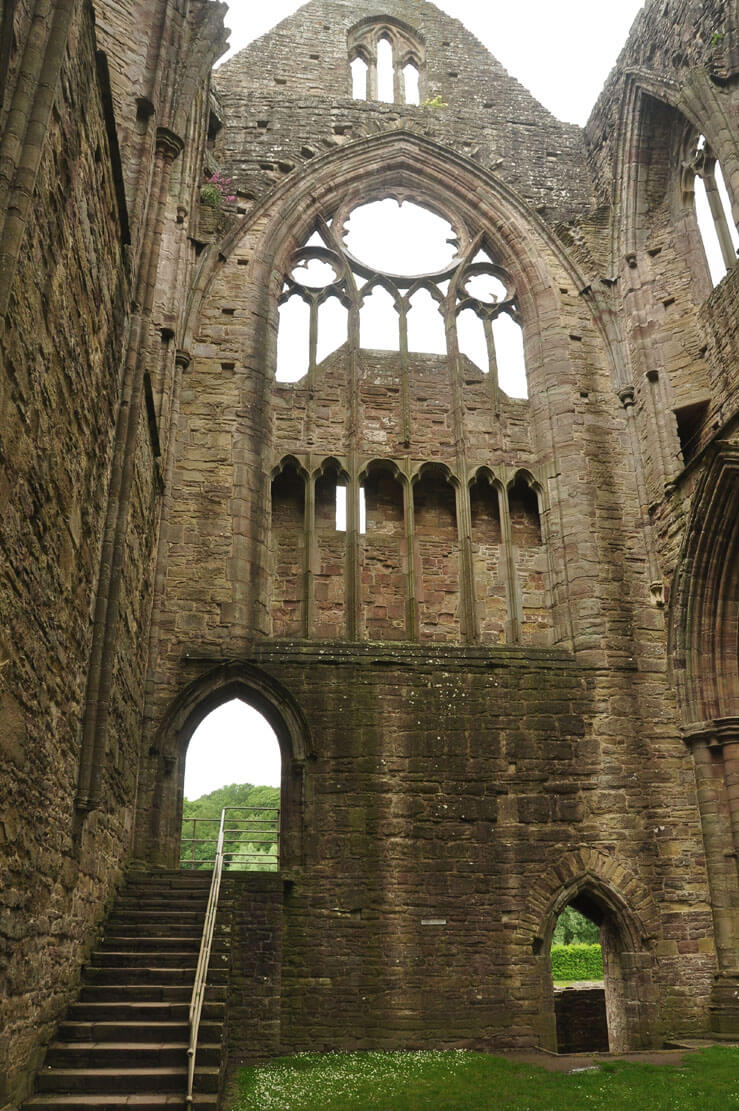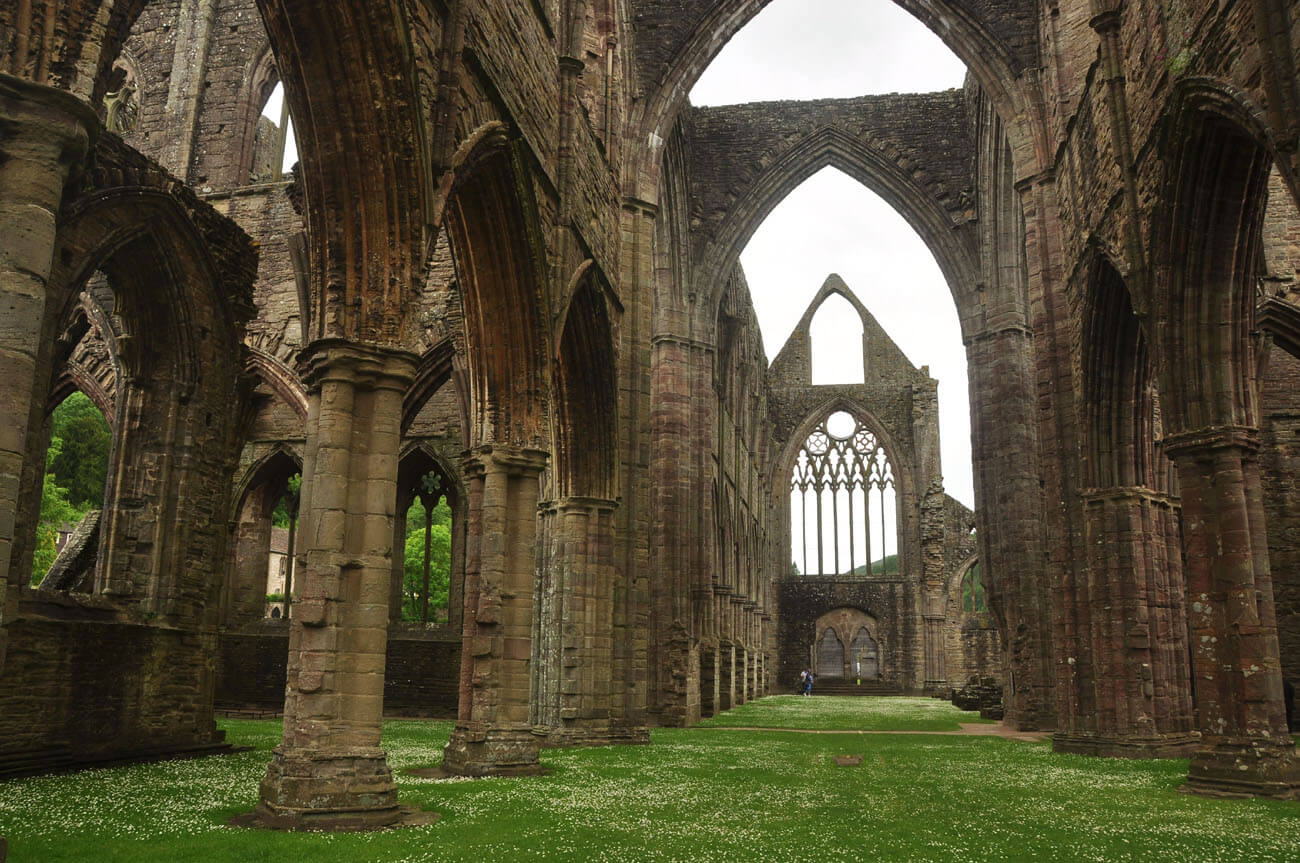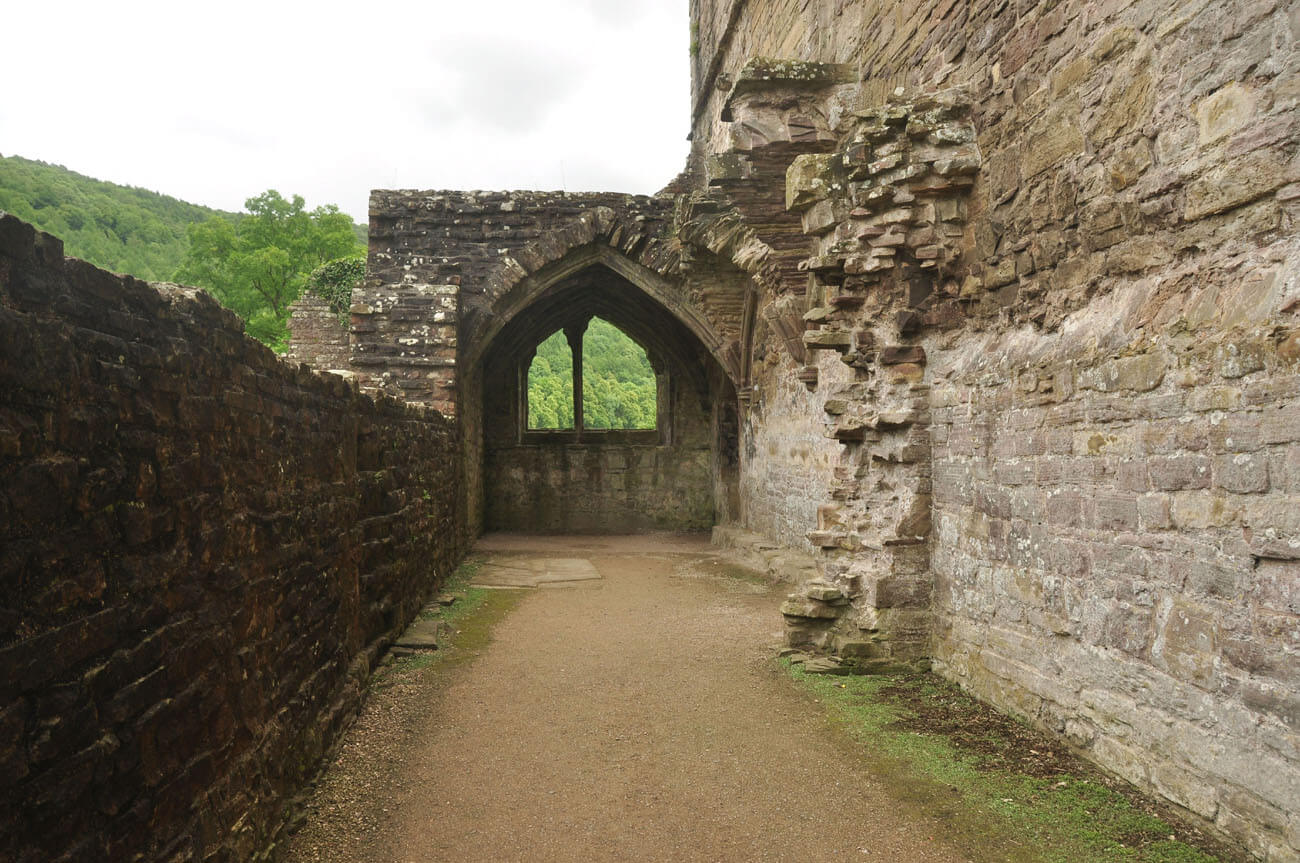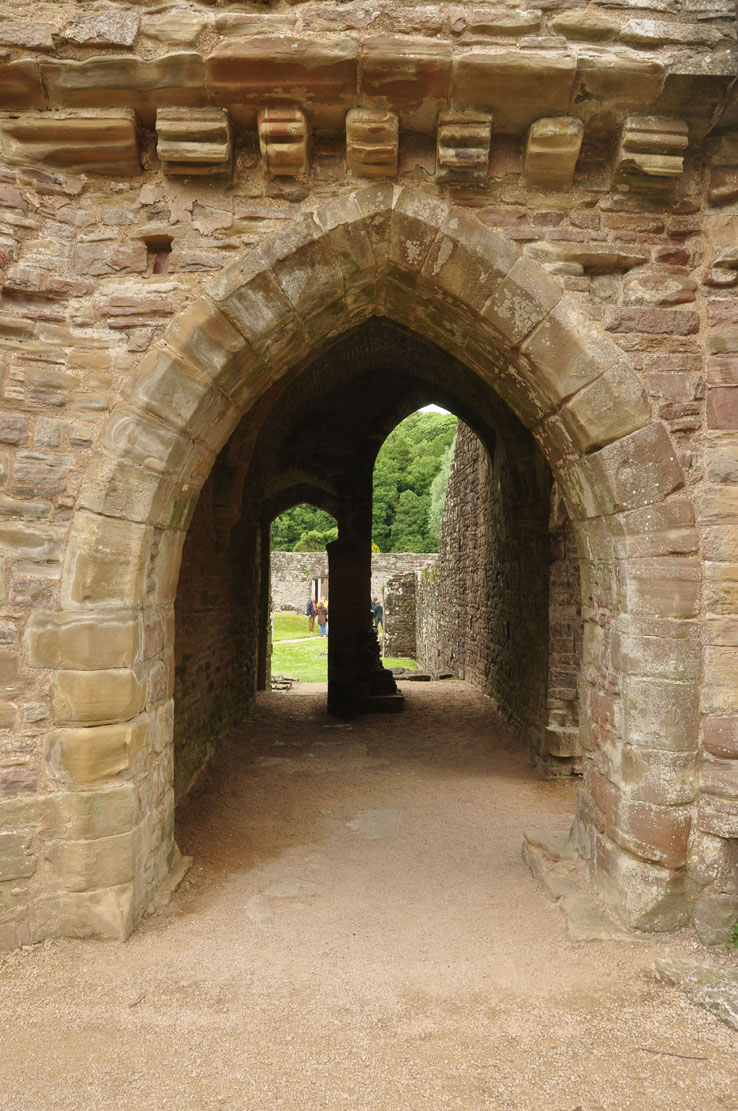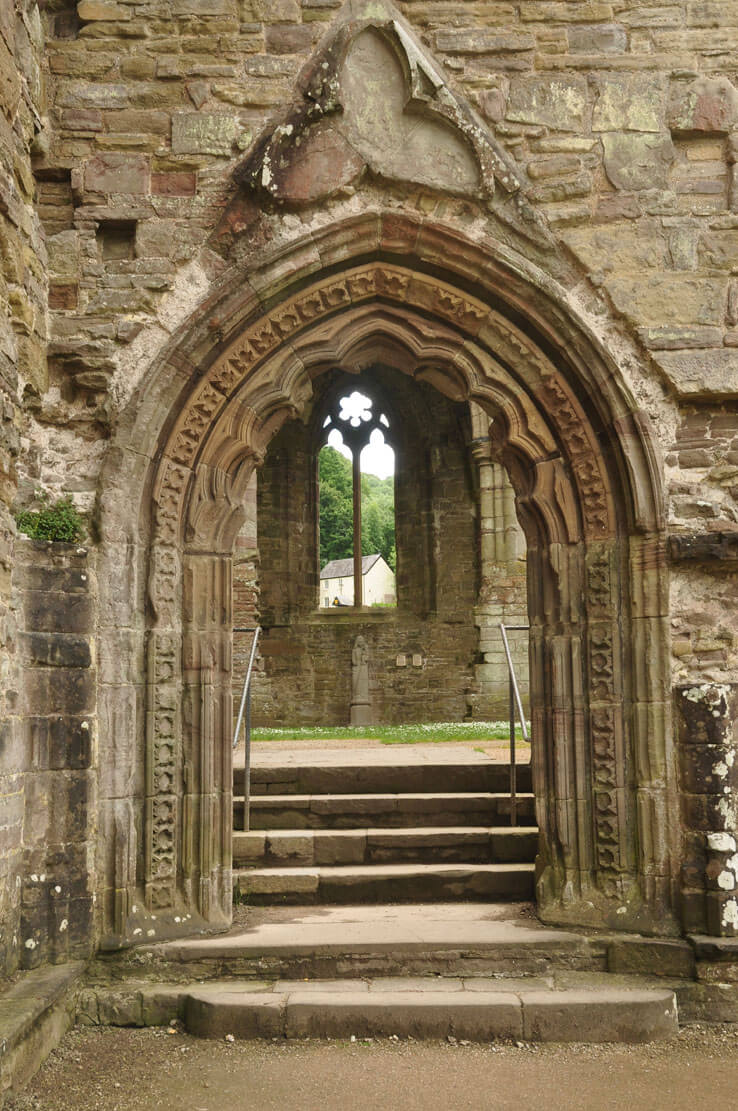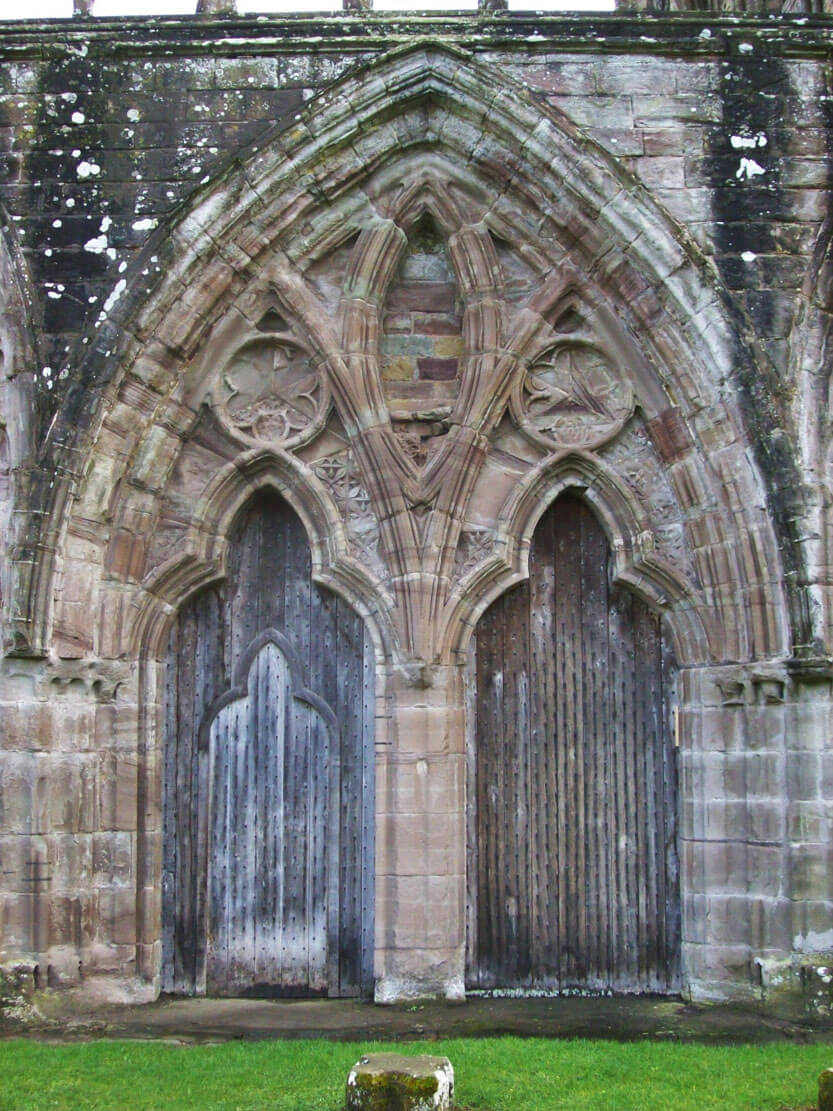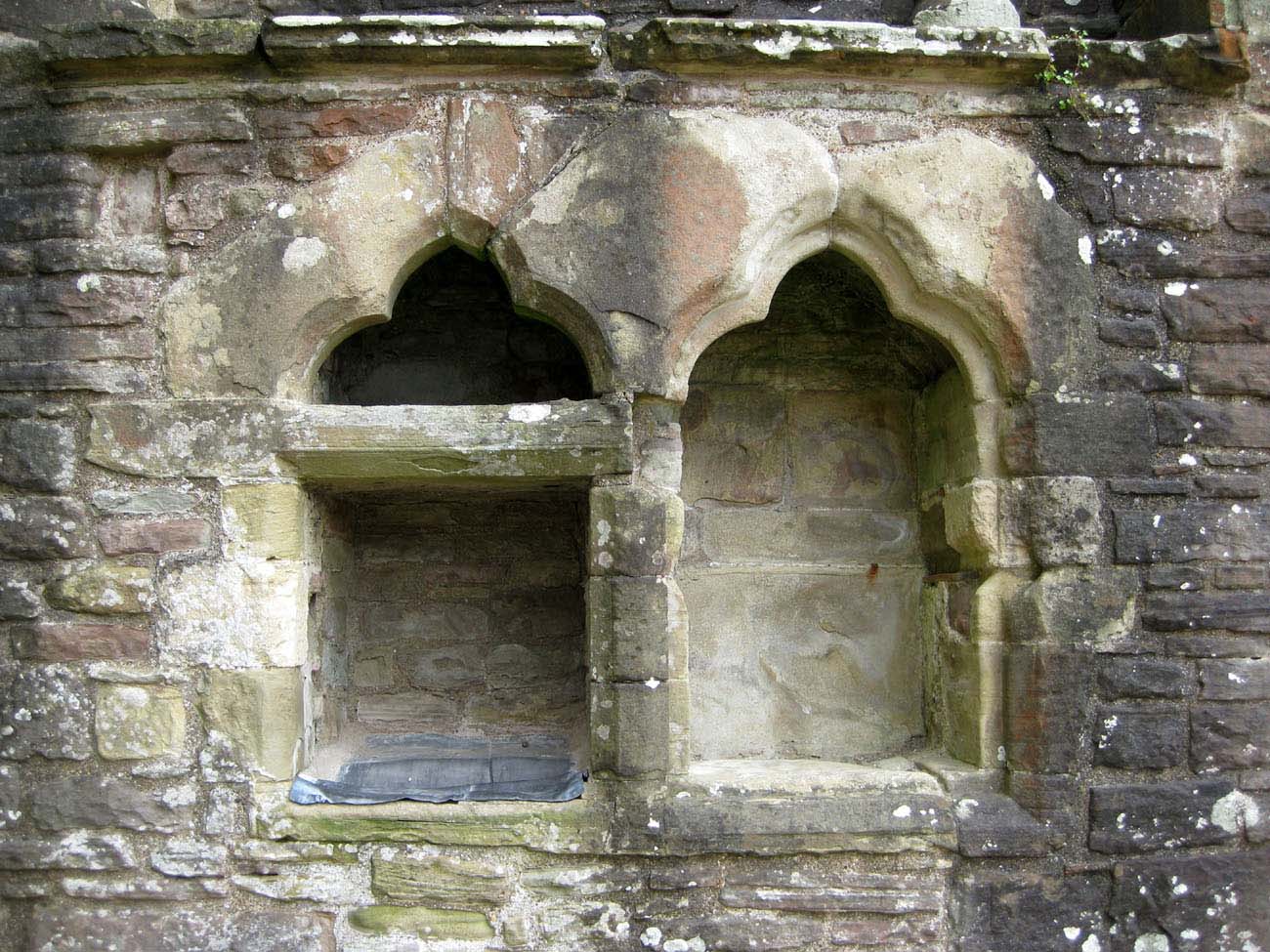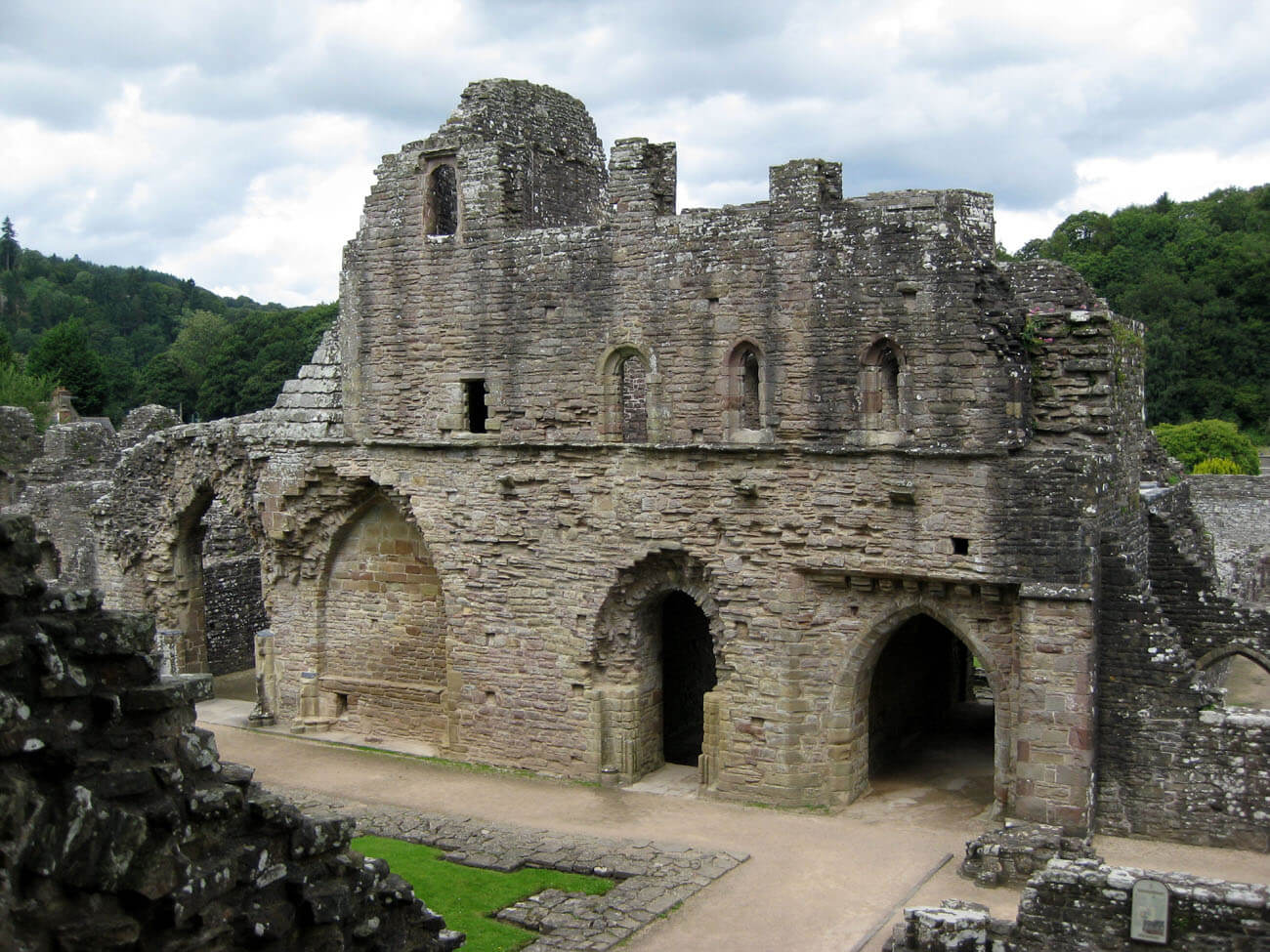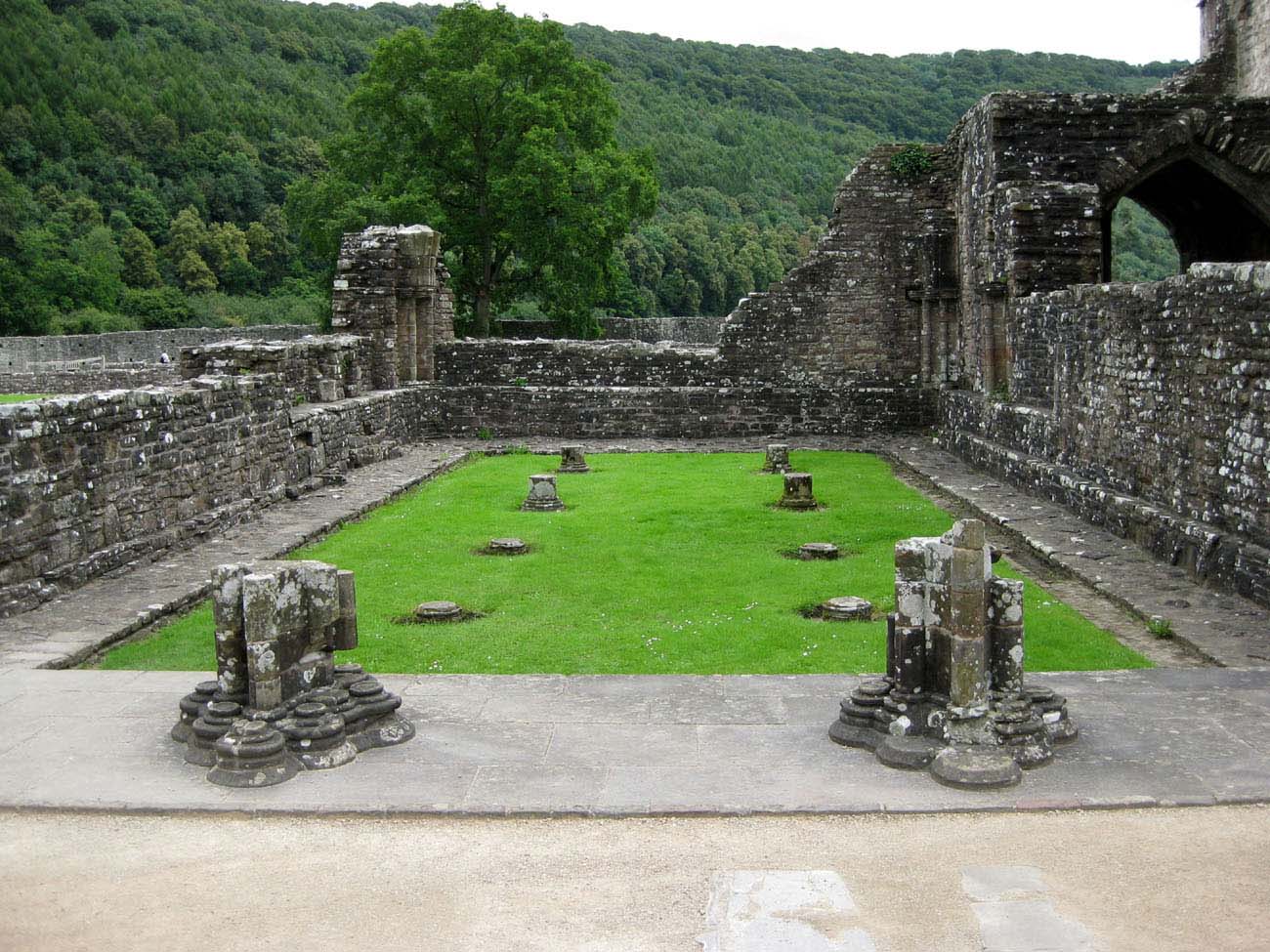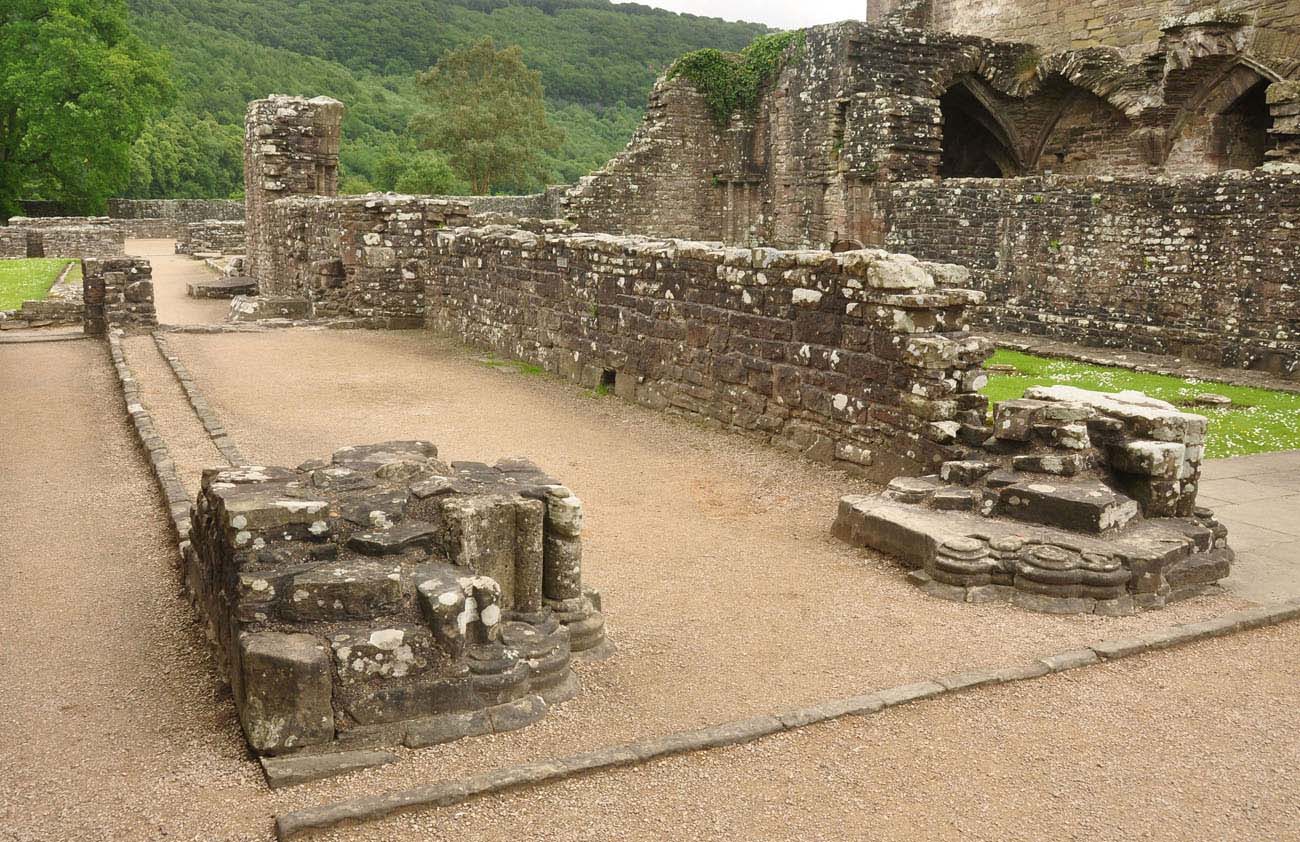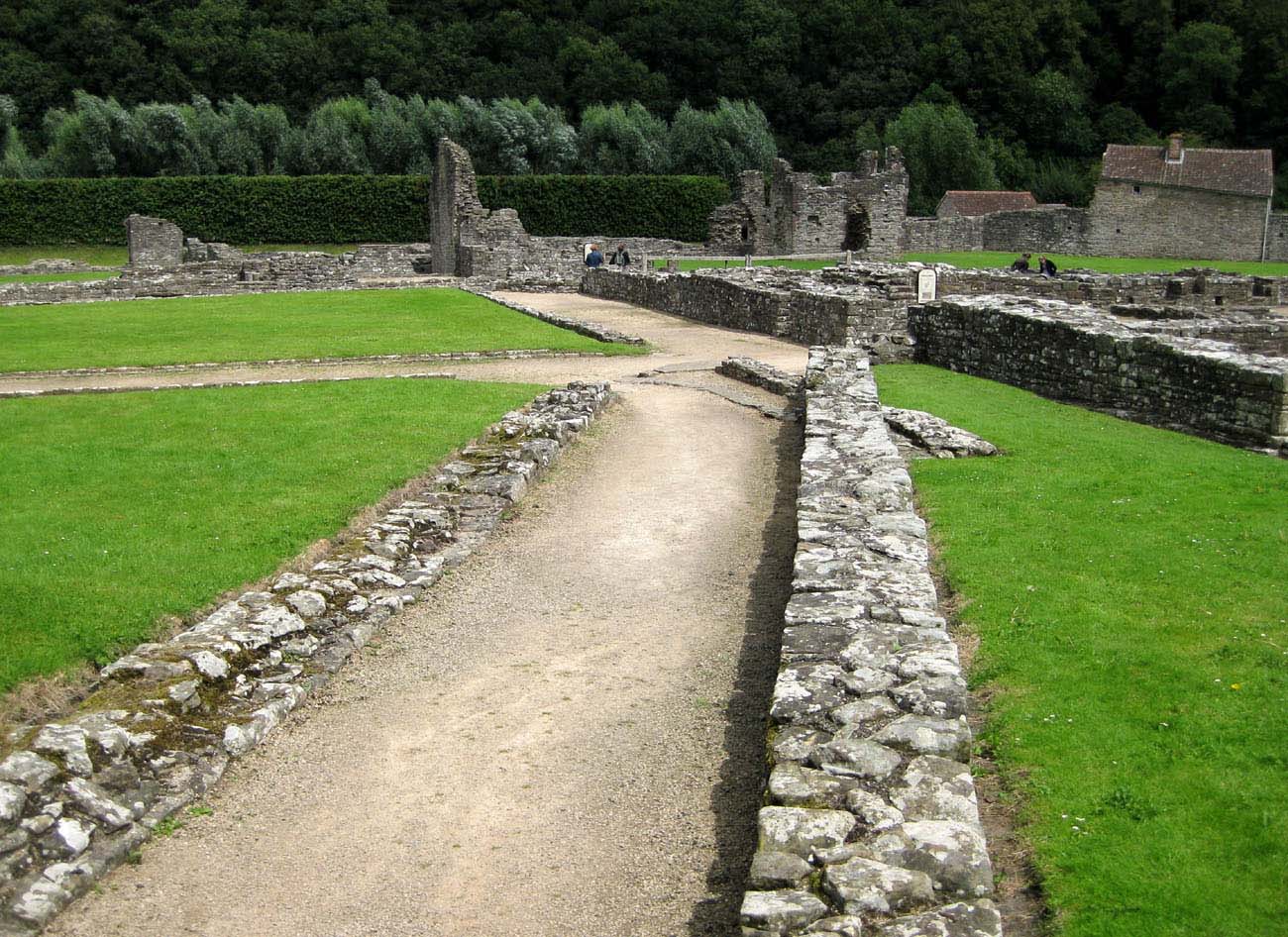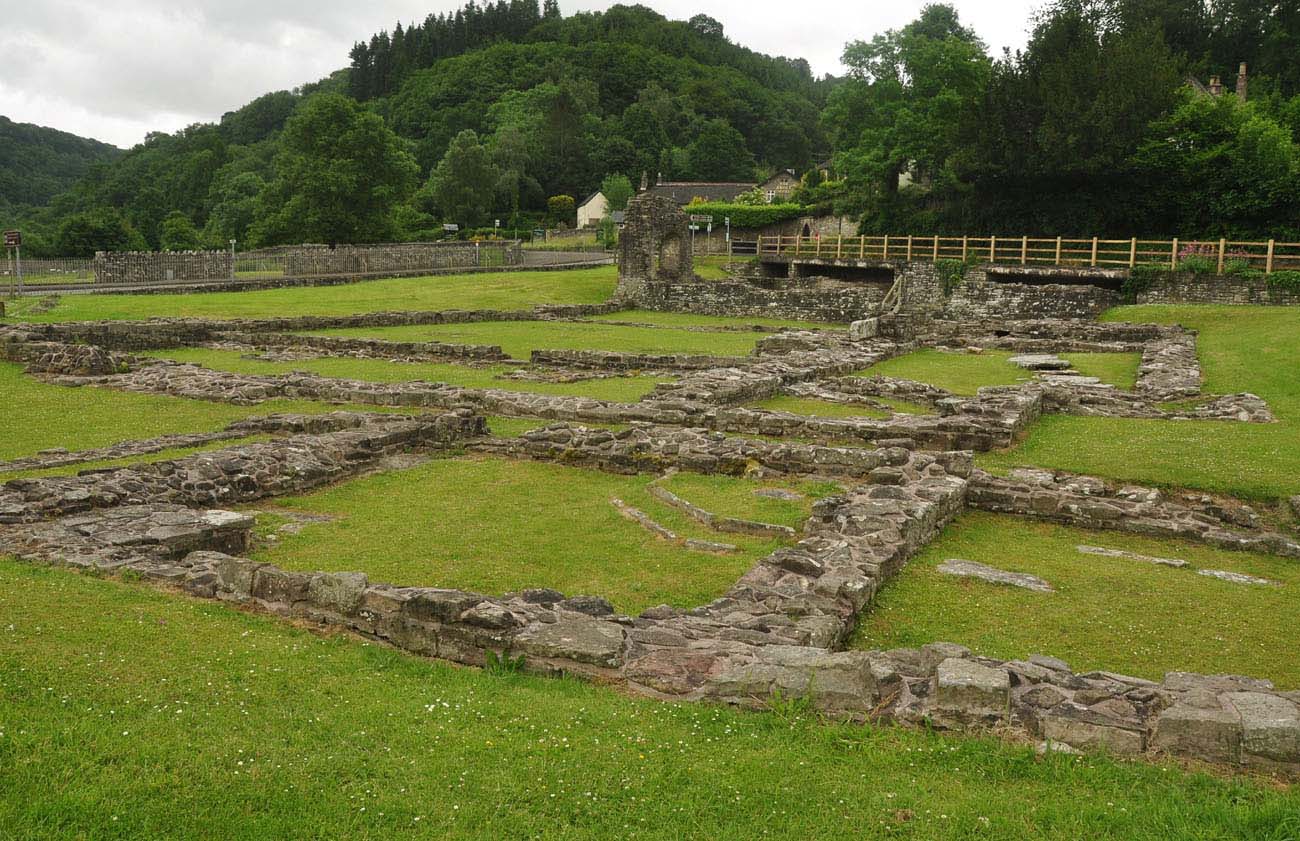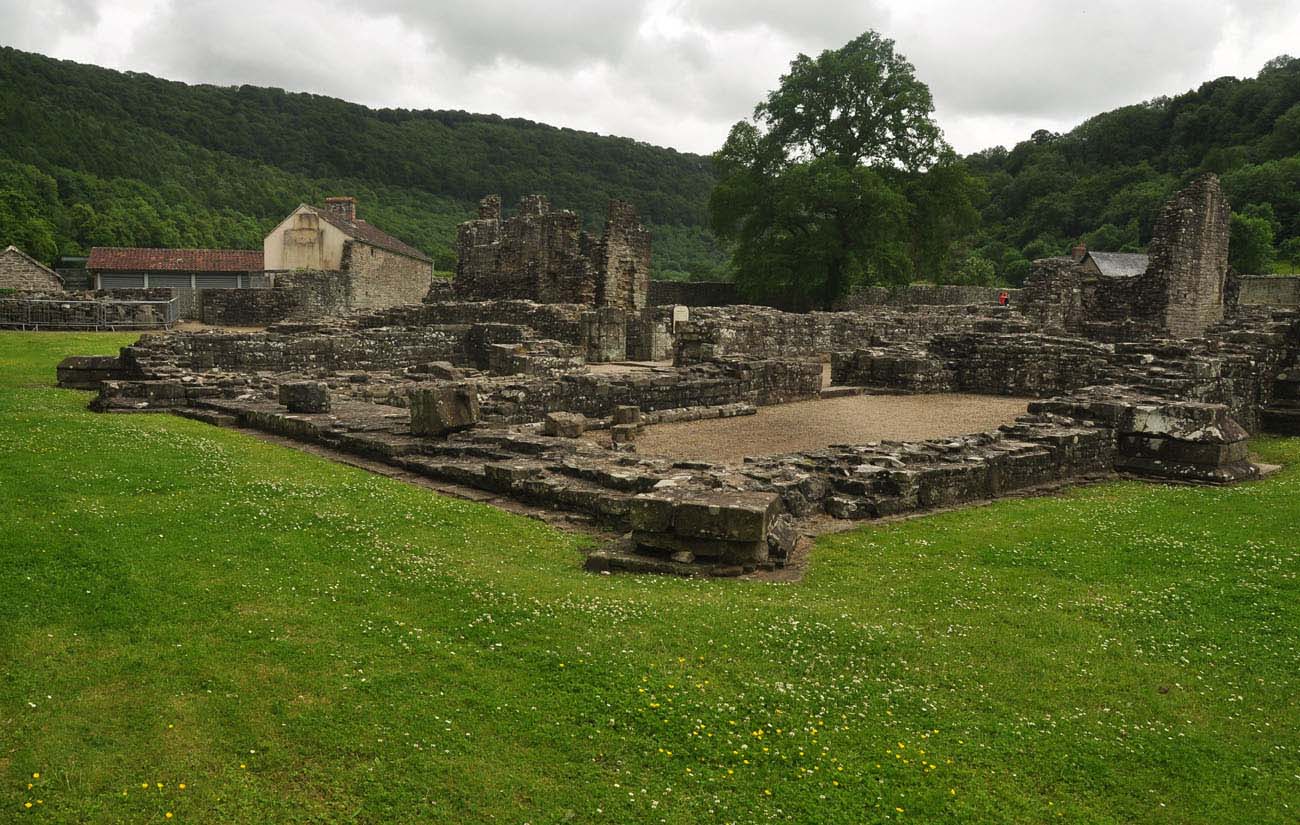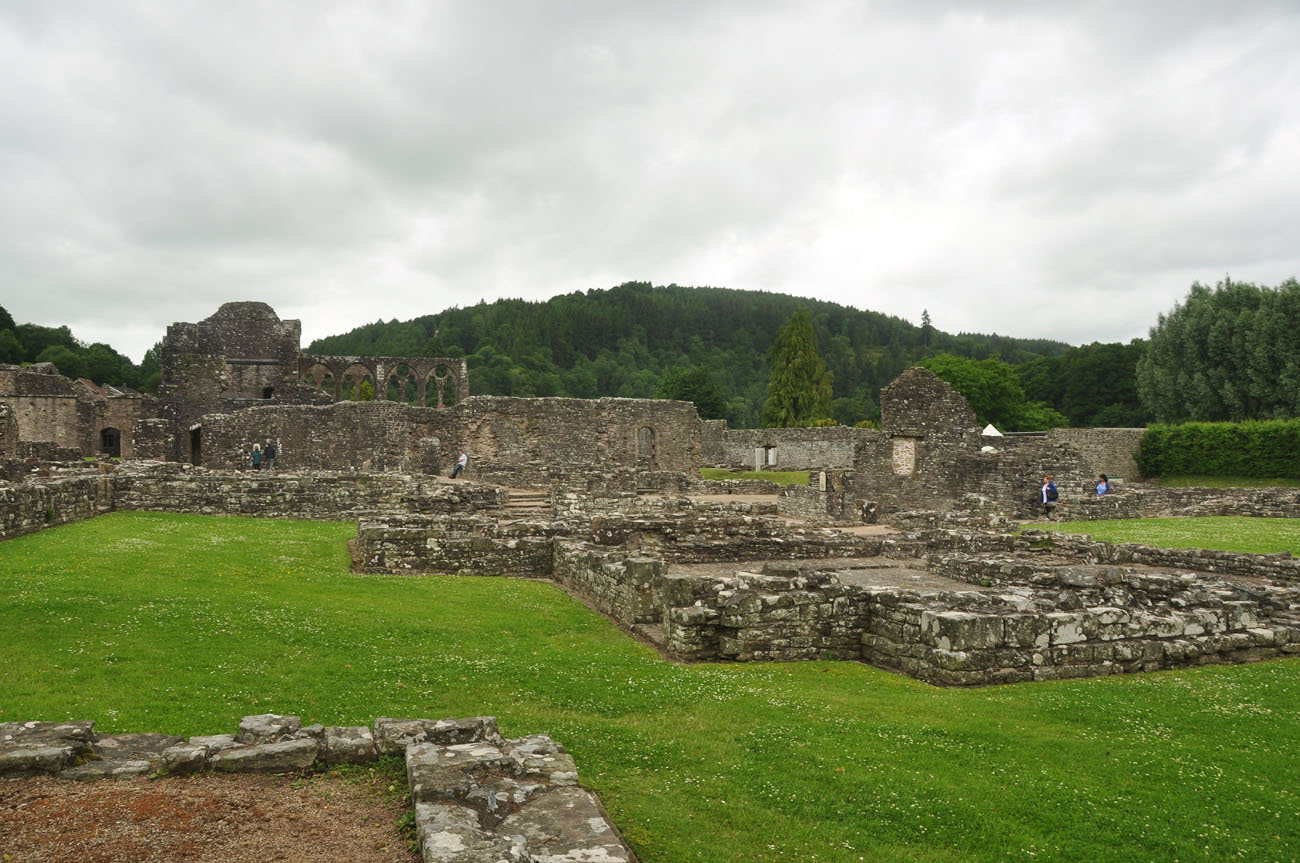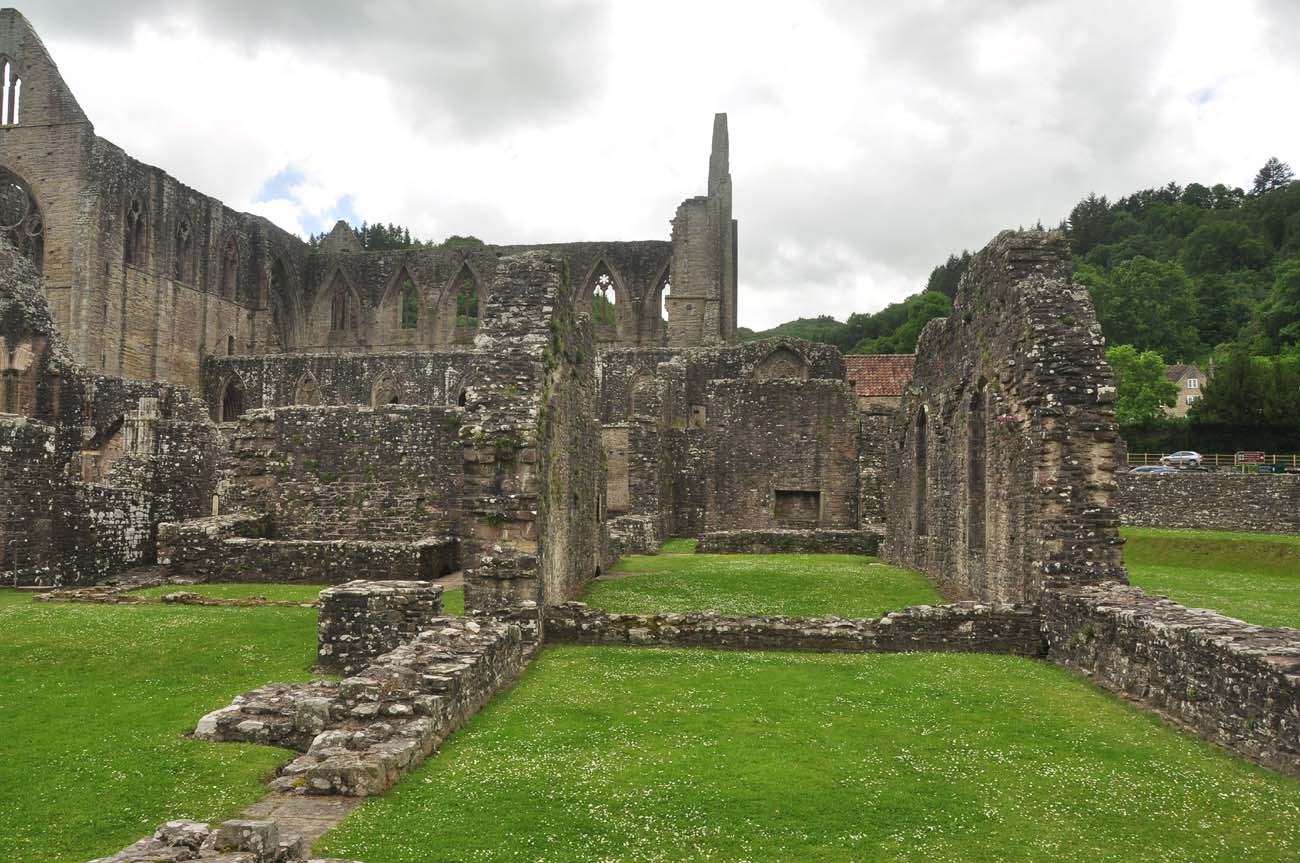History
The Tintern Abbey was founded in 1131 by Walter de Clare, Lord of Chepstow. Walter had family ties to William, Bishop of Winchester, who founded the oldest Cistercian convent in Britain in Waverley, which is why he probably decided to bring the monks of this rule. Tintern was the second Cistercian convent in Britain and the first in Wales. Monks came from the monastery of L’Aumône, diocese of Chartres in France. They acted according to the rule of Saint Benedict, and their main, strict rules were: obedience, poverty, chastity, silence, prayer and work.
Many lands on both sides of the Wye River were given to the abbey. They were divided into agricultural units or granges, where local people worked and provided services. By the end of the 13th century, the abbey already had over 3,000 acres of arable land and almost 3,000 sheep. The most generous donors of the abbey was Roger Bigod III, Lord of Chepstow. Thanks to him in 1269 the monumental rebuilding of the abbey church began.
The first monastery buildings, probably still wooden, began to arise shortly after the arrival of the first monks to Tintern. When the position of the abbey was secured and the community of brothers began to grow, it became necessary to build more durable buildings. Probably the first Romanesque church was built until the mid-twelfth century, in the days of the energetic abbot Henry, a reformed former thief. During this period, work on the monastery buildings was certainly advanced, and in its original shape it was completed before the beginning of the 13th century. Construction work in the monastery practically never stop. In the 20s or 30s of the 13th century, the Gothic rebuilding of the refectory, the entire north and east wing began, and around the mid-13th century the modernization of the west wing and cloisters continued. In the second half of the thirteenth century, the most significant new building was the infirmary, initially situated slightly further, intended for the sick and old monks. During this period, work was already underway on a new magnificent Gothic church, built during the reign of Abbot John since 1269. Its construction began from the eastern part, next to the older temple, so that it could perform liturgical functions during the long construction process. When around 1288 the chancel and southern transept were completed, masses could already take place in the new church, and the old one could begin to be gradually demolished to make room for the new nave and the northern transept, with old stones used in the further construction of the new temple. Ultimately, the Gothic reconstruction of the church ended at the beginning of the fourteenth century, although work on the expansion of various parts of the monastery continued with varying intensity until the until the end of the 15th century. At that time, the great abbey could house about twenty monks and fifty lay brothers.
Eight years after the foundation of the abbey, the monks from Tintern were sent to found a daugher house in Kingswood, Gloucestershire. Another daugher house became in 1203 the Little Tintern (Tintern Parva) in Ireland (county Wexford), erected on the initiative of William Marshal, Lord Chepstow and Pembroke, who in 1201 was caught off the coast of Ireland by a storm and because for fear of life vowed to establish a new convent there.
Tintern was one of the few Welsh abbeys that avoided the destruction caused by the wars of Edward II. Undoubtedly this was due to the fact that it occupied a remote, isolated place. All we know is that Edward II stayed in the abbey for two nights in 1326, when he fled Roger Mortimer’s army. In the mid-fourteenth century, the abbey was experiencing difficulties due to lack of people, extinct due to the “black death”, and at the beginning of the fifteenth century financial problems emerged, as a result of the Welsh uprising of Owain Glyndŵr. The convent saved itself with the money from the pilgrims’ donations, who came to the abbey, as in its chapel there was a statue of the Our Lady, which, as the pilgrims thought, possessed miraculous powers.
In 1535, the abbey’s annual income was valued at 192 pounds, making Tintern the richest monastery in Wales. Nevertheless, it was included to the first Act of Suppression of king Henry VIII, who dissolved all religious houses that did not achieve an annual income of 200 pounds. The buildings of the dissolved monastery were given to Henry Somerset, Earl of Worcester in 1549. He dismantled the roofs to gain valuable lead, which started the degradation of the medieval buildings. Over the next two centuries, Tintern’s interest was small. In the 17th and 18th centuries, the ruins were inhabited by workers from local factories. In the middle of the 18th century, it became fashionable to visit “romantic” and picturesque places, and the first security and research works were undertaken only at the beginning of the 20th century.
Architecture
The abbey was founded in the Wye River Valley, which steep and wooded slopes hid it and made it invisible from a distance. This was also in accordance with the criteria of the order rule, demanding the construction of the convent in inaccessible areas away from human settlements. The entire monastery complex covered 27 acres of land, protected by a wall about 3 meters high. There is no certainty whether it surrounded the monastery around the whole perimeter, especially on the eastern side, where steep slopes fell towards meadows and the banks of the river. The entrance was provided by at least two gates: one on the south-west side, in the place where the land routes crossed, the other on the north side, overlooking the river and the ferry. In 1536 it was mentioned in sources so-called The Great Gate, probably located in the southern gatehouse with a vaulted passage, later transformed into the chapel of St. Anne. After crossing the southern gate, the road led north-west towards the economic buildings of the monastery (barns, stables, granaries, etc.) and to the north-east, where the church and the most important abbey buildings were located. As access to this part was restricted, in the north-west, apart from the economic buildings, there was also a guest house, a two-aisle building with a central hearth inside. In addition, on the west, outside the perimeter of the wall, a water mill was located at the mouth of the Angidy brook to the River Wye.
The original church from the 12th century was erected on the Latin cross plan with a small four-sided chancel and a narrow nave, measuring about 52 meters. On the north and south side there were wide transverse aisles (transept), each with two small chapels on the east side. This church was relatively modest, built in Romanesque style, illuminated by small windows with upper semicircular arches. As the eastern part of the church had thicker walls, its interior was probably crowned with a barrel vault, both in the presbytery and in the transept. The nave had only a flat timber ceiling, and its roof was higher than the roof of the chancel. The eastern range of a 8.5 meters width bordered the northern transept. In the ground floor, next to the church, it housed a chapter house, and in the northern part there was a brothers’ day room and a separate warming room. The whole top was occupied by a bedroom – a dormitory. At the beginning of the thirteenth century, this range was extended 12 meters north, enlarging the dormitory and connecting it with the latrine block. The chapter house was also enlarged to the east. In the northern wing, parallel to the nave of the church, there was a refectory, a place for monks to eat. From the west, the inner courtyard closed the third wing housing the rooms of lay brothers.
The abbey church from the second half of the 13th century was built in the style of English Decorative Gothic and left the Cistercian simplicity of the earlier temple. It was a building in the form of a basilica on a Latin cross plan, consisting of three-aisle, six-bay nave, the northern and southern transept and a rectangular, three-aisle chancel. In its eastern part there was a row of chapels, two chapels were also placed in the eastern parts of the transepts. Church did not have a large tower, only a small ridge-turret on the intersection of the naves. The whole building has reached an impressive length of 72 meters.
The church was illuminated by large pointed windows placed between buttresses and pilaster strips. The windows in the four eastern bays of the southern aisle were large two-light, while in the two western bays two-light, but much smaller, with higher window sills, which was probably caused by the construction during the second phase. Many different tracery designs were placed in the windows, the most magnificent of which were installed in the large eight-light window in the eastern chancel wall and the seven-light window of the western facade. Below it there were two entrance portals crowned with trefoils, framed by a large ogival arch in which there was a niche, originally housing the carved figure of St. Mary. Similar figures were probably also placed between the decorative tracery to the right and left of the main portal. From 1320 it was preceded by a porch, which arcades and a vault based on four columns probably protected the statue of the Our Lady, to which pilgrimages were organized.
The nave of the church was divided into six bays separated by pillars enclosed by eight shafts which supported the ogival arcades. In the interior, despite the large size of the church, did not dominate the free space, because the side aisles were separated from the central nave by a wall 3.4 meters high. In addition, in 1330, between the fourth and fifth pair of pillars of the nave, a magnificent stone rood screen (pulpitum) was placed, separating the part of the church intended for lay people from the part accessible only to monks. It was a structure with a width of five bays, pierced from the west by ogival arcades richly decorated with crockets, passing into ogee arches and topped with a 5.5 meter high frieze. Each of the western arcades was flanked by a separate pinnacle (one additional was also placed in the north and south), connected to the pillars of the screen by a pair of “bridges”. At the height of the central western bay, the pulpitum had an additional eastern bay, flanked from the north and south by stairs leading to the upper gallery.
Around the choir in the central part of the church, four massive pillars supported the intersecting arcades and rib vaults. In this place, just behind the rood screen, there were timber stalls, that is seats for monks. Further inside the three bays of the presbytery there was an altar, around which the aisles provided an ambulatory for the procession. In the last bay of the southern aisle there was a niche with a piscina, used for washing liturgical vessels. The entire interior of the church was plastered and whitewashed, and lines imitating stone blocks were painted with red paint. Probably at the end of the Middle Ages more sophisticated wall polychromes were created in some chapels. The floors in the most important parts of the temple, that is the presbytery, choir and transept, were covered with clay tiles with more than 30 patterns: heraldic, geometric and floral. On the other hand, over the entire building, stone cross-rib vaults were established, in the central nave and the presbytery falling on bundles of three-shafts, based on carved corbels placed between ogival arcades.
The main, ceremonial entrance to the church was on the west side, through a portal with two openings topped with trefoils, and further through the rood screen, or the so-called night stairs in the northern transept were used, which led to the dormitory and were used during night services. Next to them, the lower portal led to the sacristy, and in the western part of the northern aisle of the presbytery in the fourteenth century a portal to a long covered passage leading to the infirmary was pierced. Another richly moulded and decorated portal connected the north-eastern part of the aisle with the cloisters. It was the main daily entrance for monks going to church services. The portal in the southern transept probably served as a side exit to the cemetery on the east side. Next to it in the corner was a spiral staircase leading to the gallery in the west wall and further to the attic by the south aisle. A similar staircase led to the north gallery of the church, but it was located on the first floor of the dormitory adjacent to the northern transept. In both transepts, the construction of upper passages forced the creation of large open ogival arcades, in the upper parts of which were also windows of the clerestory.
The monastery buildings in Tintern were exceptionally on the north side of the church, not on the south side, as it usually was. A square, main garth, originally surrounded by Romanesque cloisters, was adjacent to the northern aisle, with not very large dimensions, about 23.2 x 23.2 meters, and after reconstruction in the mid-13th century, 30.5 x 33.5 meters. The cloisters provided access to most of the buildings without the need to face unfavorable weather conditions, and also provided space for study, relaxation and contemplation, as well as some ceremonies. They were covered with mono-pitched roofs, since the mid-thirteenth century supported by two rows of columns ended with semicircular arcades filled with elegant, variously moulded trefoils. The arcades were connected with miniature rib vaults, the novelty was also the alternating arrangement of columns. In the northern part there was a lavabo, where the monks could wash their hands before meals. In the second half of the 15th century, the southern and western parts of the cloisters were rebuilt. Probably this part was sealed, and after strengthening the outer walls, windows were embedded in them to avoid severe weather conditions.
On the west side of the main cloisters was the 13th-century west wing, which was the main entrance to the monastery. This range housed the refectory and dormitory of lay brothers, connected by an oblique passage with the cloister and the rest of the convent’s buildings relatively late, because only at the end of the 13th century. In the west wing there was also the so-called an outer parlour, that is a type of room for contacts with lay people. In front of it at the end of the 13th century was added an entrance porch, to which guests came, for whom a stone seat and a large niche were placed. In the 15th century, probably to boast of greater splendor, the entrance door from the porch to the parlour was rebuilt and a stone vault was placed in it. On the first floor there were chambers of the monk managing the cellarium, in which he conducted business, received guests and managed the monastery property. North of it was a square vaulted room without a direct connection to the cloister. It was used as a warehouse and pantry – cellarium. In the fourteenth century, the west wing was extended to the south, so it could be connected by a direct, diagonal passage with the northern aisle of the church.
The corner, west fragment of the north wing was occupied by the monastery kitchen. It was placed exactly between the aforementioned refectory of lay brothers and the main refectory of monks located on its eastern side, thanks to which it could efficiently service both buildings. The kitchen was divided into two rooms. In one of it there was an outflow for waste removed to the gutter and connection to the main refectory and cloister, while in the second, west one, there was a hearth and three doors: to the cloister, to the west wing and to the rear yard. The main refectory, that is the dining room of the monks, after the rebuilding from the first half of the 13th century, was a large building on a rectangular plan with longer walls on the north-south line, with large, pointed, Gothic windows. It was an impressive hall 26 meters long and 9 meters wide, probably topped with a timber open roof truss. Inside, the monks gathered only once a day for a silent meal, consisting of bread, vegetables and beer or fish and eggs on Lenten Days. In the southern wall of the refectory there were two niches for washing and storing dishes, and the stairs led to the pulpit from which monk read during meals. In the south-eastern part, the portal led directly to a small pantry or warehouse.
On the eastern side of the refectory, there was a much smaller, rectangular, rib vaulted, warming house. It was the only, apart from the kitchen and infirmary, constantly heated room, also used for the phlebotomy recommended by the then medicine. In the center of the room was a fireplace supported by four columns. Narrow passages on its sides allowed access to fire from all sides. The upper floor was probably occupied by a small vaulted archive, where the most important monastery documents were kept in a dry place. Next to it on the east side of the first floor was a larger room, illuminated from the cloister by three small windows and two on the north side. The space on the eastern side of the warming house was filled with a passage from the so-called day stairs leading to the dormitory and archive. The portal downstairs led to the rear yard, where perhaps wood for burning in the fireplace was stored. At the very end of the monastery’s functioning, to the warming house was added to the second floor, probably residential. Its lighting was provided by late Gothic Tudor windows.
The north-east corner of the main cloister was occupied by a large rectangular building with a so-called monks’ day room. It was one of the oldest stone buildings in the monastery, which around 1200 was extended northwards. Than the interior received vaults supported by a row of five octagonal columns and moulded corbels mounted on the walls. From the east, the building had a two-story annex with latrines and a drainage channel. The ground floor housed two vaulted rooms with a passage to the infirmary, while on the first floor from a dormitory you could reach latrines located above the sewage. A canal also ran under the northern part of the day room building, but with clean water. Its level could be raised by sluices, so that it was then redirected to the higher north-east channel towards the abbot’s residence. This water intake was so important that financial penalties were imposed on the monks who were washing dirty things in it. The upper floor of the east range was occupied by the monks’ bedroom, up to 52 meters long – the dormitory, from which portal led to the northern transept of the church. Such a large room could contain up to a hundred straw mattresses. Later in the Middle Ages, when the number of monks fell, the dormitory was probably separated by timber screens to give the brothers greater privacy. On the south side in the ground floor, the day room was adjacent to the passage leading to the second cloister and another narrow room originally housed stairs to the first floor. Further on was a small, rectangular room (parlour) in which the brothers could talk to each other for a short time without breaking the orders rule.
A small sacristy and a much larger chapter house were placed between the north transept of the church and the day room. Entrance to the chapter house led from the cloister through three richly decorated arcades set on pillars with a total of 14 shafts of which six were not permanently attached. Its rib vault was supported by eight pillars dividing the space into three naves. Three western bays of the chapter house lying directly below the dormitory, later in the Middle Ages were transformed into a vestibule, while the two eastern spans, in which the higher vaults were installed and the floor was made of decorative tiles, were the proper chapter house. It was illuminated by three large ogival windows in the eastern wall. Inside, on stone benches placed by the walls, monks gathered under the leadership of the abbot to listen to the readings of the monastic rule and to deal with the monastery’s everyday problems and matters. The southern two rooms, crowned with rib vaults, were occupied by the sacristy and a small library (armarium). A stone cupboard was placed in the southern wall of the sacristy, and its floor was tiled. Above, the door in the south wall of the dormitory led to the treasury.
North of the church chancel was a infirmary cloister. Its dimensions in the plan were 25.6 x 21.6 meters. Since the fourteenth century, a covered passage led to it, directly from the church. Right next to the eastern side there was an infirmary building in the form of a basilica, measuring 33 x 16 meters with clerestory windows above the aisles. It was reserved for sick and old brothers, so it had to be erected a bit further of the main buildings. Inside the aisles were partitioned by timber screens, creating separate cells, heated with fireplaces. In the larger chamber, also heated by fireplace, on the north-east side, served as the infirmarer’s lodging. In a separate annex on the north-west side there were latrines, situated above the drainage channel. They were adjacent to the infirmary kitchen building complex, which was only built in the 15th century, although it could have replaced some earlier construction. Inside, the hearth provided meals for both the sick and the abbot’s residents. In the further years of the 15th century, this kitchen was enlarged from the east by two additional rooms, connected by a passage in the southern annex. Two more hearths and a scullery were placed in it.
The rectangular, originally detached house of the abbot was built already in the first half of the 13th century, in the most northeastern part of the monastery. It was a building in which the superior of the convent could receive guests and benefactors of the abbey. Originally, the abbot lived with other monks, but as early as the 13th century he had two private, separate rooms at the infirmary cloister, arranged in the shape of the letter L. The smaller of these chambers, the western one, was warmed by the fireplace. At the floor level, it could be connected to the latrine block, and then to the brothers’ dormitory, but in the fourteenth century, between the latrines and the abbot’s house, a free passage was pierced. In the fourteenth century, along with the increase in the importance of the monastery and the rank of abbot and the desire to introduce higher comfort, a completely new building was erected on the north side, connecting the two previously described (detached and L-shaped). It was a spacious building with many chambers and an elongated lobby from the river side. Its linking with the kitchen of the infirmary also ensured fast serving of meals. During this period, to to the thirteenth-century abbot’s building the chapel was added on the southern side, with a piscina in the wall and a two-light window on the eastern side. Right next to it was also added then an annex with a latrine and a dovecote of an uncertain dating.
Current state
The abbey church in Tintern, although it is in the form of a ruin, is today one of the best preserved Gothic religious buildings in Wales, and also one of the most picturesque. What’s more, it is an outstanding example of the 13th-century English Decorated Gothic. Unfortunately, the northern wall of the central nave with its arcades did not survive, and the southern aisle is today the only roofed part of the church. Also little survived from the monastery buildings, only a fragment of the warming building, refectory, day house, west range with porch and chapel of the abbot’s house remained. Only foundations have survived from the remaining buildings.
The monument is open from March 1 to June 30 every day from 9:30 to 17:00, from July 1 to August 31 daily from 9.30 to 18.00, from September 1 to October 31, every day from 9.30 to 17.00, from November 1 to March 31, Monday to Saturday from 10:00 to 16:00 and on Sunday from 11:00 to 16:00.
bibliography:
Burton J., Stöber K., Abbeys and Priories of Medieval Wales, Chippenham 2015.
Harrison S., Morris R., Robinson D.M., A Fourteenth Century Pulpitum Screen at Tintern Abbey, Monmouthshire, “The Antiquaries Journal “, vol. 78 , 1998.
Harrison S., Robinson D.M., Cistercian Cloisters in England and Wales Part I: Essay, “Journal of the British Archaeological Association”, 159 (2006).
Robinson D.M., Tintern Abbey, Cardiff 2002.
Salter M., Abbeys, priories and cathedrals od Wales, Malvern 2012.

